2003 Tour de France
90th edition: july 5 - july 27, 2003, results, map, stages with running gc, video, teams.
2002 Tour | 2004 Tour | Tour de France Database | 2003 Tour Quick Facts | 2003 Tour de France Final GC | Stage results with running GC | Teams | Route details | 2003 Tour afterthoughts | Video |
Prologue | Stage 1 | Stage 2 | Stage 3 | Stage 4 | Stage 5 | Stage 6 | Stage 7 | Stage 8 | Stage 9 | Stage 10 | R est Day 1 | Stage 11 | Stage 12 | Stage 13 | Stage 14 | Stage 15 | Rest Day 2 | Stage 16 | Stage 17 | Stage 18 | Stage 19 | Stage 20 |
Map of the 2003 Tour de France
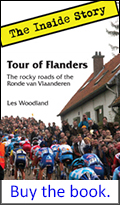
Les Woodland's book Tour of Flanders: The Inside Story - The rocky roads of the Ronde van Vlaanderen is available in print, Kindle eBook and audiobook versions. To get your copy, just click on the Amazon link on the right.
2003 Tour Quick Facts
3,426.5 km raced at an average speed of 40.956 km/hr.
198 starters and 147 classified finishers.
The 2003 Tour represented the 100th anniversary of the Tour de France.
Armstrong won his fifth Tour , but was not the dominating rider he had been in his previous four victories.
Richard Virenque joined Lucien van Impe and Federico Bahamontes in winning the Mountains classification for a sixth time.
At 40.940 km/hr, the 2003 Tour was the fastest Tour to date
Armstrong was stripped of all of his Tour wins after his doping was revealed.
2003 Tour de France Complete Final General Classification :
- Jan Ullrich (Bianchi) @ 1min 1sec
- Alexandre Vinokourov (Telekom) @ 4min 14sec
- Tyler Hamilton (CSC) @ 6min 17sec
- Haimar Zubeldia (Euskaltel) @ 6min 51sec
- Iban Mayo (Euskaltel) @ 7min 6sec
- Ivan Basso (Fassa Bortolo) @ 10min 12sec
- Christphe Moreau (Credit Agricole) @ 12min 28sec
- Carlos Sastre (CSC) @ 18min 49sec
- Francisco Mancebo (Ibanesto) @ 19min 15sec
- Denis Menchov (Ibanesto) @ 19min 44sec
- Georg Totschnig (Gerolsteiner) @ 21min 32sec
- Peter Luttenberger (CSC) @ 22min 16sec
- Manuel Beltran (US Postal) @ 23min 7sec
- Massimilliano Lelli (Cofidis) @ 24min
- Richard Virenque (Quick Step) @ 25min 31sec
- Jorg Jaksche (ONCE) @ 27min 22sec
- Roberto Laiseka (Euskaltel) @ 29min 15sec
- Jose Luis Rubiera (US Postal) @ 29min 37sec
- Didier Rous (Brioches La Boulangere) @ 30min 14sec
- Laurent Dufaux (Alessio) @ 33min 17sec
- David Plaza (Bianchi) @ 45min 55sec
- Felix Manuel Garcia (Bianchi) @ 47min 7sec
- Alexandre Botcharov (Ag2r) @ 49min 47sec
- Daniele Nardello (Telekom) @ 53min 14sec
- José Bento Azevedo (ONCE) @ 54min 31sec
- Javier Pascual (Kelme) @ 57min 0sec
- Grischa Niermann (Rabobank) @ 1hr 0min 32sec
- Mikel Astarloza (Ag2r) @ 1hr 2min 13sec
- Iñigo Chaurreau (Ag2r) @ 1hr 3min 35sec
- Stéphane Goubert (Jean Delatour) @ 1hr 5min 38sec
- Michael Boogerd (Rabobank) @ 1hr 7min 55sec
- Laurent Brochard (Ag2r) @ 1hr 9min 35sec
- Roberto Heras (US Postal) @ 1hr 14min 17sec
- Giuseppe Guerini (Telekom) @ 1hr 16min 43sec
- Juan Miguel Mercado (iBanesto) @ 1hr 22min 32sec
- Sylvain Chavanel (Brioches La Boulangere) @ 1hr 25min 1sec
- Jörg Ludewig (Saeco) @ 1hr 25min 13sec
- Andy Flickinger (Ag2r) @ 1hr 28min 53sec
- Patrice Halgand (Jean Delatour) @ 1hr 30min 42sec
- José Enrique Gutiérrez (Kelme) @ 1hr 35min 51sec
- Michael Rogers (Quick Step) @ 1hr 37min 28sec
- David Moncoutié (Cofidis) @ 1hr 38min 49sec
- Nicki Sørensen (CSC) @ 1hr 39min 54sec
- Michael Blaudzun (CSC) @ 1hr 41min 9sec
- Iván Ramiro Parra (Kelme) @ 1hr 44min 1sec
- George Hincapie (US postal) @ 1hr 44min 11sec
- Paolo Bettini (Quick Step) @ 1hr 45min 9sec
- Matthias Kessler (Telekom) @ 1hr 45min 17sec
- Vladimir Miholjevic (Alessio) @ 1hr 45min 59sec
- Xabier Zandio (iBanesto) @ 1hr 48min 53sec
- Christophe Brandt (Lotto) @ 1hr 50min 33sec
- Evgeni Petrov (iBanesto) @ 1hr 52min 3sec
- Andrea Peron (CSC) @ 1hr 53min 45sec
- David Millar (Cofidis) @ 1hr 54min 38sec
- David Cañada (Quick Step) @ 1hr 58min 1sec
- Angel Casero (Bianchi) @ 1hr 58min 32sec
- Mikel Pradera (ONCE) @ 1hr 59min 37sec
- Walter Bénéteau (Brioches la Boulangere) @ 2hr 0min 9sec
- Fabio Sacchi (Saeco) @ 2hr 0min 56sec
- Ufo Bölts (Gerolsteiner) @ 2hr 1min 38sec
- Kurt Van Der Wouwer (Quic Step) @ 2hr 2min 1sec
- Guido Trentin (Cofidis) @ 2hr 2min 1sec
- Gerrit Glomser (Saeco) @ 2hr 2min 11sec
- Laurent Lefèvre (Jean Delatour) @ 2hr 3min 39sec
- Marzio Bruseghin (Fassa Bortolo) @ 2hr 6min 0sec
- Pablo Lastras (iBanesto) @ 2hr 6min 30sec
- Marcos Antonio Serrano (ONCE) @ 2hr 7min 26sec
- Luca Paolini (Quick Step) @ 2hr 10min 30sec
- Aitor Garmendia (Bianchi) @ 2hr 10min 41sec
- Jérôme Pineau (Brioches la Boulangere) @ 2hr 11min 33sec
- Isidro Nozal (ONCE) @ 2hr 12min 14sec
- David Latasa (Kelme) @ 2hr 12min 58sec
- Andrea Noè (Alessio) @ 2hr 17min 58sec
- Franco Pellizotti (Alessio) @ 2hr 20min 52sec
- Viatcheslav Ekimov (US Postal) @ 2hr 21min 53sec
- Floyd Landis (US Postal) @ 2hr 25min 19sec
- Nicolas Fritsch (FDJ) @ 2hr 26min 58sec
- Dario David Cioni (Fassa bortolo) @ 2hr 31min 37sec
- Mikel Artetxe (Euskaltel) @ 2hr 34min 10sec
- Salvatore Commesso (Saeco) @ 2hr 34min 47sec
- Nicolas Portal (Ag2r) @ 2hr 35min 4sec
- René Andrle (ONCE) @ 2hr 35min 17sec
- Gilberto Simoni (Saeco) @ 2hr 35min 47sec
- Yuriy Krivtsov (Jean Delatour) @ 2hr 36min 1sec
- Serge Baguet (Lotto) @ 2hr 37min 20sec
- Steve Zampieri (Vini Caldirola) @ 2hr 40min 28sec
- Victor Hugo Peña (US Postal) @ 2hr 40min 49sec
- Mario Aerts (Telekom) @ 2hr 40min 50sec
- Stuart O'Grady (Credit Agrisole) @ 2hr 41min 24sec
- Ludovic Turpin (Ag2r) @ 2hr 43min 44sec
- Markus Zberg (Gerolsteiner) @ 2hr 47min 7sec
- Carlos de la Cruz (FDJ) @ 2hr 47min 54sec
- Rolf Aldag (Telekom) @ 2hr 48min 34sec
- Franck Renier (Brioches la Boulangere) @ 2hr 48min 54sec
- Oscar Freire (Rabobank) @ 2hr 51min 18sec
- Cédric Vasseur (Cofidis) @ 2hr 51min 58sec
- Alberto Lopez (Euskaltel) @ 2hr 52min 45sec
- Bram de Groot (Rabobank) @ 2hr 56min 35sec
- Vladimir Karpets (iBanesto) @ 2hr 57min 9sec
- Iñigo Landaluze (Euskaltel) @ 3hr 2min 37sec
- Pavel Padrnos (US Postal) @ 3hr 5min 34sec
- Fabrizio Guidi (Bianchi) @ 3hr 6min 23sec
- Juan Antonio Flecha (iBanesto) @ 3hr 9min 7sec
- Médéric Clain (Cofidis) @ 3hr 9min 22sec
- Nicolas Jalabert (CSC) @ 3hr 11min 36sec
- Erik Zabel (Telekom) @ 3hr 11min 39sec
- Laszlo Bodrogi (Quick Step) @ 3hr 12min 20sec
- Benoît Poilvet (Credit Agricole) @ 3hr 14min 11sec
- Christophe Mengin (FDJ) @ 3hr 14min 47sec
- Sandy Casar (FDJ) @ 3hr 19min 43sec
- Paolo Fornaciari (Saeco) @ 3hr 20min 14sec
- Jakob Piil (CSC) @ 3hr 20min 57sec
- Anthony Geslin (Brioches la Boulangere) @ 3hr 21min 1sec
- Marc Wauters (Rabobank) @ 3hr 21min 43sec
- Romans Vainsteins (Vini Caldirola) @ 3hr 23min 43sec
- Nicolas Vogondy (FDJ) @ 3hr 25min 22sec
- Thor Hushovd (Credit Agricole) @ 3hr 25min 33sec
- Thomas Voeckler (Brioches la Boulangere) @ 3hr 28min 18sec
- Bekim Leif Christensen (CSC) @ 3hr 28min 23sec
- Christophe Oriol (Ag2r) @ 3hr 29min 35sec
- Alvaro González de Galdeano (ONCE) @ 3hr 32min 37sec
- Servais Knaven (Quick Step) @ 3hr 33min 45sec
- Philippe Gaumont (Cofidis) @ 3hr 34min 37sec
- José Vicente Garcia (iBanesto) @ 3hr 35min 10sec
- Davide Bramti (Quick Step) @ 3hr 36min 10sec
- Iñigo Cuesta (Cofidis) @ 3hr 37min 12sec
- Koos Moerenhout (Lotto) @ 3hr 38min 38sec
- Damien Nazon (Brioches la Boulangere) @ 3hr 39min 58sec
- Maryan Hary (Brioches la Boulangere) @ 3hr 40min 55sec
- Christophe Edaleine (Jean Delatour) @ 3hr 45min 18sec
- Leon Van Bon (Lotto) @ 3hr 51min 56sec
- Bradley McGee (FDJ) @ 3hr 52min 49sec
- Paolo Bossoni (Vini Caldirola) @ 3hr 54min 39sec
- Jean-Patrick Nazon (Jean Delatour) @ 3hr 56min 38sec
- Thomas Liese (Bianchi) @ 3hr 56min 49sec
- Frédéric Finot (Jean Delatour) @ 3hr 56min 38sec
- Sébastien Hinault (Credit Agricole) @ 4hr 0min 26sec
- David Munoz (Kelme) @ 4hr 3min 40sec
- Baden Cooke (FDJ) @ 4hr 3min 10sec
- Samuel Dumoulin (Jean Delatour) @ 4hr 4min 59sec
- Julian Usano (Kelme) @ 4hr 5min 46sec
- Robbie McEwen (Lotto) @ 4hr 13min 28sec
- Dario Andriotto (Vini Caldirola) @ 4hr 14min 48sec
- Daniel Becke (Bianchi) @ 4hr 26min 8sec
- Alessandro Bertolini (Alessio) @ 4hr 27min 59sec
Final Points (Green Jersey)
- Robbie McEwen (Lotto): 214
- Erik Zabel (Telekom): 188
- Thor Hushovd (Credit Agricole): 173
- Luca Paolini (Quick Step): 156
- Jean-Patrick Nazon (Jean Delatour): 154
- Stuart O'Grady (Credit Agricole): 153
- Fabrizio Guidi (Bianchi): 122
- Jan Ullrich (Bianchi): 122
- Damien Nazon (Brioches la Boulangere): 107
Final Climber (Polka Dot): Virenque joins Bahamontes and Van Impe in the 6-times climbers club.
- Laurent Dufaux (Alessio): 187
- Lance Armstrong (Us Postal): 168
- Christophe Moreau (Credit Agricole): 136
- Juan Miguel Mercado (Ibanesto): 136
- Iban Mayo (Euskaltel): 130
- Haimar Zubeldia (Euskaltel): 125
- Jan Ullrich (Bianchi): 124
- Tyler Hamilton (CSC): 116
- Paolo Bettini (Quick Step): 100
Final Young Rider (White Jersey)
- Mikel Astarloza (Ag2R) @ 42min 29sec
- Juan Miguel Mercado (Ibanesto) @ 1hr 2min 48sec
- Sylvain Chavanel (Brioches La Boulangere) @ 1hr 5min 17sec
- Andy Flickinger (Ag2R) @ 1hr 9min 9sec
Final Team Classification :
- CSC: 248hr 18min 18sec
- Ibanesto @ 21min 46sec
- Euskaltel @ 44min 59sec
- US Postal @ 45min 53sec
- Bianchi @ 1hr 12min 40sec
Most Combative Rider: Alexandre Vinokourov (Telekom) Centenary Prize: Stuart O'Grady (Credit Agricole)
Sunday, July 27: Tour afterthoughts. Greek playwrights crafted their many plays from the same stories that were the common culture of all Greeks. The stories of Elektra, Agamemnon, Orestes, etc. were well known. It was in how the writer varied the story, changing the emphasis here and delineating a character a little differently there that he made his art. The outcomes were always known. Antigone always dies. The tension was in how the play would arrive at that conclusion.
So too, with Jan Ullrich and the Tour de France. Over and over Ullrich, our Hector, has dutifully donned his greves and met Lance Armstrong, the modern Achilles, to do battle. Each time, with the variations a 5th century BC Athenian audience would expect and enjoy, Achilles is triumphant over Hector.
This year again, Ullrich went forth, fully expecting to lose. But, Achilles faltered. That spark of godlike perfection was missing. He made mistakes, he showed weakness. Hector, for a short time, sensed that he would overturn the will of the gods and win. The struggle between the two made the Tour de France a metaphor for the indomitability of the spirit. The race was truly beautiful.
In the end, of course, Hector was again slain. When he woke up to rain on Saturday morning, he knew that he could not take back the 66 seconds he needed to win. His doom was forshadowed, as in any Greek tragedy
Ask any man in the old Athenian Agora. He could tell you the ending.
Content continues below the ads
Stages with running GC
Saturday, July 5: 6.5 km Prologue Individual Time Trial, Paris.
The riders will leave from the Eiffel Tower and do a short grunt up to the Trocadero, then a flat circle, going down the Seine, crossing at the Place de la Concorde and finishing at the south end of the Champ de Mars. I think that climb after crossing the Seine will be a shock to some of the big guys. My memory is that it's steeper than it looks on the profile.
The Prologue will start and end late in the day. The first rider will be off at 3:50 PM Paris time (7:50 AM Pacific Daylight Time). Armstrong, the last rider, will roll off at 7:07 PM and finish about 8 minutes later at 7:15 PM (10:15 AM PDT)
The Race: With the exception of Garzelli, all the favorites came in safely with no serious time losses. David Millar would surely have won the stage if he had not had his chain get stuck between the rings in the last kilometer. 5 Cofidis riders had chain problems. Some genius mechanic (probably to save a few stupid grams) removed the front derailleurs of the the bikes. The Parisian cobbles bounced the chains and created grief for the team. Some had said that US Postal was not as strong this year. They put 4 riders in the top 13.
Bradley McGee will start stage 1 in Yellow:
Sunday, July 6: Stage 1, St. Denis - Montgeron - Meaux, 168 km.
The race will start in downtown Paris for a 20 km promenade to the site of the start of the 1st Tour in 1903, the Auberge au Réveil Matin (Alarm Clock Hotel?) in Montgeron. Then the racing starts, heading south to Fontainebleau, then north to Meaux. There are 3 rated climbs, but it should be a sprinters' fest since the last rated climb is at km 85. Look for the climbers with Polka Dot ambitions to be fighting for the scraps of points these climbs will give. There are three intermediate sprints. There are enough bonus seconds available (John Wilcockson at Velonews says 38 seconds are up for grabs) for several of the sprinters to get the Yellow Jersey from McGee. Green Jersey hopefuls will probably begin the fight for their jersey by fighting for these points. The stage finish is tricky and potentially dangerous with a curvy descent and lots of corners.
Km 31.0 - Côte de Champcueil: 4th Category Km 45.0 - Côte de Boutigny-sur-Essonne: 4th Category Km 85.0 - Côte de Barbeau: 4th Category
The Race: After the first intermediate sprint, 3 riders, Andy Flickinger, Christophe Mengin and Walter Beneteau took off. They gained a lead of 9 minutes. The sprinter's teams then put the hammer down and it was all together with 15 kilometers to go. Alessandro Petacchi showed that he is still the fastest thing on two wheels.
But, there was a Tterrible crash. With about 500 meters to go, going around a broad right-hand curve, Kelme's Jose Enrique Gutierez, on the outside of of the field, towards the front but out of contention for the sprint, lost control of his bike. At first, it looked like he pulled his foot out of the pedal, but he may have been pushed by a Cofidis rider. The speed was very high and many riders came down. Here is the sad tale of the carnage: Tyler Hamilton (CSC) broke his collarbone, Levi Leipheimer (Rabobank) broke a bone in his hip and Marc Lotz (also Rabobank) banged up his face. All three are probably abandoning the Tour! Armstrong, Virenque and McGee crashed but will start tomorrow.
GC after Stage 1:
Yellow Jersey: Bradley McGee (FDJ) Green Sprinter's Jersey: Robbie McEwn (Lotto) Climber's Polka Dot Jersey: Christophe Mengin (FDJ) Young Rider (White Jersey) Andy Flickinger (Ag2R) Team GC leader: US Postal
Monday, July 7: Stage 2, La Ferte sous Jouarre - Sedan, 204.5 km.
This stage heads Northeast to the Belgian border. The 3 intermediate sprints will be raw meat for the sprinters looking for time bonuses to snag the Yellow Jersey from McGee. There are 2 rated climbs, one 35 km from the finish. This climb, the Longwe, could be a possible springboard for an escape. This is a long, flat stage that should take about 5 hours.
The Race: Lilian Jegou (Credit Agricole) took off at the 5 km mark. He was shortly joined by Frederic Finot (Jean Delatour). They amassed a lead of as much as 11 minutes. Jegou manged to get clipped by race director Leblanc's car. But with all that time in hand, Jegou was able to get several adjustments and bike changes. At 40 kilometers to go, sensing that Jegou was toast, Finot took off on a mild climb. Jegou could do nothing as Finot went off in search of Tour glory. With about 20 kilometers to go, the gap was about 4 minutes with Lotto, Fassa and Telekom pulling the pack for their sprinters.
With 2 kilometers to go the pack's speed was very high, Quickstep and FDJ joined in the chase. Finot's adventure was over. The sprint was a big, burley drag race down a long, straight finish.
And, Tyler Hamilton who started the race today with a broken collarbone, finished OK to keep his high GC placing.
GC after Stage 2:
Yellow Jersey: Bradley McGee (FDJ) Green Sprinter's Jersey: Robbie McEwen (Lotto) Climber's Polka Dot Jersey: Christophe Mengin (FDJ) Young Rider (White Jersey): Baden Cooke (FDJ) Team GC leader: U.S. Postal
Tuesday, July 8: Stage 3, Charleville Mezieres - St. Dizier, 167.5 km. This short, rolling stage heads due South. One little rated climb at the start of the stage for the Polka Dots to fight over:
Km 8.5 - Côte de Boutancourt: 4th Category
The Race: The first hour was done at a blisteringly fast 50.3 kph! With the time bonus from the second sprint, Jean-Patrick Nazon became the virtual race leader. All 196 riders from yesterday started the stage, including Tyler Hamilton. With about 25 kilomters to go, Fassa joined Jean Delatour to shut down the escape of Brioche's Anthony Geslin, who took off with about 90 km to go. He had a lead of over 3 minutes, but it was reduced down to a bit over 1 minute with the wind-up for the last intermediate sprint (taken again by JP Nazon).
At 17 km to go, Geslin was caught with Fassa hammering the front for Petacchi. Vini Caldirola also started to move their men to the front.
It was an insanely fast dash to the line with no team controlling the sprint. Rene Haselbacher (Gerolsteiner), bumping elbows with McEwen (?) crashed spectacularly.
GC after Stage 3:
Yellow Jersey: Jean-Patrick Nazon (FDJ) Green Sprinter's Jersey: Robbie McEwen (Lotto) Climber's Polka Dot Jersey: Christophe Mengin (FDJ) Young Rider (White Jersey): Baden Cooke (FDJ) Team GC leader: US Postal
Wednesday, July 9: Stage 4, Joinville - St. Dizier 69 km Team Time Trial.
This is the first stage that will make a material difference to the GC standings. Good riders on weak teams hate the havoc a team time trial wreaks upon their times. Armstong with his powerful Postal team, Beloki with ONCE, Vinokourov with Telekom and Sastre & Hamilton with CSC have some horsepower to call upon. Ullrich and Bianchi should not be ignored. ONCE have won the TTT two out of the last three times, and the time they didn't, they got 2nd. The GC standings will be quite different Wednesday afternoon. Sittting in 1st place in Team GC, US Postal will be the last team off. They should finish about 5:08 PM Paris time (8:08 AM PDT). If Postal wins, Victor Hugo Pena, as the highest placed Postie will be in Yellow.
They will leave in 5-minute intervals in reverse Team GC order. Alessio is first. The last 4, in order, will be Euskaltel, FDJ, Bianchi and US Postal. The Posties will get news about the time splits of all their opponents while they ride, which is a great tactical advantage. The time for the team is when the 5th rider crosses the line. Dropped riders do not get the team time, but are on their own. The rules limit the time loss to 7 minutes for dropped riders.
The Race: Postal had such power that their team now has 8 of their guys in the top ten. Saeco did a poor ride and Simoni is now saddled with a 3 minute deficit. Iban Mayo is also crippled with the effects of riding for a weak team. Cofidis looked ragged, costing David Millar still more time.
Intermediate time checks:
All the teams have passed thorugh the 18 km intermediate check point. US Postal came though at 7th, 14 sec behind the fastest time of Telekom.
Here are the top 5 at 18 km.:
1- TEAM TELEKOM 00:21:25 2- CREDIT AGRICOLE @ 01" 3- CALDIROLA @ 07" 4- IBANESTO.COM @ 07" 5- ONCE - EROSKI @ 08"
44.5 km checkpoint with all teams through. ONCE and US Postal look like perfect machines, their pacelines clean and neat.
1- ONCE - EROSKI:51:00 2- US POSTAL at 06" 3- IBANESTO.COM at 11" 4- TEAM BIANCHI at 18" 5- TEAM TELEKOM at 25"
59 km checkpoint with all the teams through:
1- US POSTAL: 1:07:27 2- ONCE at 17" 3- TEAM BIANCHI at 32" 4- IBANESTO.COM at 35" 5- QUICK STEP at 01' 00"
GC after Stage 4:
Yellow Jersey: Victor Hugo Pena (US Postal) Green Sprinter's Jersey: Robbie McEwen (Lotto) Climber's Polka Dot Jersey: Christophe Mengin (FDJ) Young Rider (White Jersey): Vladimir Karpets (Ibanesto) Team GC leader: US Postal
Thursday, July 10: Stage 5, Troyes - Nevers, 195.6 km.
The rolling terrain will favor aggression. It will be interesting to see if Postal defends Pena's jersey. Since their goal is Paris (and Postal DS Bruyneel has ice water in his veins), I am sure they will not waste any energy that does not bring them closer to that goal.
A thought about the Tour so far. All great Tour riders, including Armstrong, say that luck plays an important part in Tour success. The winner must execute perfectly and must also be blessed with good fortune. I am sure that Danilo Di Luca's illness cost Saeco's Gilberto Simoni dearly in the team time trial. When Saeco picked its Tour team, they must have been counting on Di Luca's considerable power for a competitive time. And one little miscalculation on the part of another rider and Tyler Hamilton has a broken collarbone and Levi Leipheimer, with a broken hip, is watching the Tour on TV. A year's hard work is undone in a split second.
The race: At the 18km mark, 14 riders got away. But with Postal's Roberto Heras in there, who is high high in the GC standing, the peloton chased them down. As they were getting caught, 5 members of that break scooted away: Laszlo Bodrogi, Frederic Finot, Nicolas Jalabert, Ludovic Turpin and Jens Voigt. These are all good, powerful riders with no GC hopes. It became the responsibilty of the sprinter's teams to run them down. Also, FDJ had to chase down Finot if they wanted to keep Mengin in the climber's jersey. The 5 men attained a maximum lead of 3min 5sec.
Finot took the second of the rated climbs, so the Polka Dot Jersey moves from FDJ's Mengin to Finot.
Tyler Hamilton had his bandages changed on the fly, hanging on to the Tour doctor's car door. He doesn't know the meaning of surrender. For him to leave the Tour, I think they will have to take the handlebars from his "cold, dead hands".
The race was very fast. The average for the first 3 hours of rolling country is over 47 kph.
With 23 km to go, 4 of the riders in the break were caught, but Jean Delatour's Finot took off by himself with the peloton easily in sight. And then at 20 km ot go, he was caught.
But, Paolo Bettini, "Il Grillo" (the Cricket) leaps on a small rise and counter-attacks and takes Hinault and Vinokourov with him. He ripped open a quick 20 second gap. It was shortlived as Vinokourov gave very half-hearted support to the effort. So much for "shaking things up and putting Postal under pressure". Vino is a GC man and had the World Number One rider to help him steal some time... Talk is so cheap.
It was altogether for a big sprint. And, out of nowhere, flying by everyone, Alessandro Petacchi made the rest of the best sprinters of the world look like they were standing still!
GC after Stage 5:
Yellow Jersey: Victor Hugo Pena (US Postal) Green Sprinter's Jersey: Robbie McEwen (Lotto) Climber's Polka Dot Jersey: Frederic Finot (Jean Delatour) Young Rider (White Jersey): Vladidmir Karpets (ONCE) Team GC leader: US Postal
Friday, July 11: Stage 6, Nevers - Lyon, 230 km.
This is the longest stage of the Tour so far and the day before the Tour hits the Alps. While this is pretty mild most of the way, it does offer a touch of the lash with the Tour's first category 3 climb at kilometer 159. With the fight for Tour glory so intense, I think that while many riders would like to take it easy before the weekend's tough climbs, the take-no-prisoners aggression will continue.
The Race: It's a blisteringly hot 88 F (30C?). After some breakaway attempts, Stuart O'Grady (Credit Agricole) and Anthony Geslin (Brioches) accumulated over 17 minutes on a roasted peloton. The gap has come down now, with 70 kilometers to go, to about 10 minutes. At this point, O'Grady now has the virtual Green Jersey.
With 5 kilometers to go, O'Grady and Geslin still have a minute in hand as they race through the town of Lyon. Lotto's McEwen and Telekom's Zabel have crashed, so that will take those important chasing teams out of the picture.
Awww! With a kilometer to go, they were caught. In the sprint, Petacchi came steaming out of the field like a spit seed and had enough of a gap to easily freewheel across the line. It was hard to believe that the rest of the sprinters were really going as fast as they could. Patacchi was that much faster.
Tomorrow: The Alps. Saturday's stage has 5 rated climbs including the 1st category Col de la Ramaz. Sunday has the monumental Galibier and L'Alpe d'Huez . The time for talk is over.
GC after Stage 6:
Yellow Jersey: Victor Hugo Pena (US Postal) Green Sprinter's Jersey: Alessandro Petacchi (Fassa Bortolo) Climber's Polka Dot Jersey: Christophe Mengin (FDJ) Young Rider (White Jersey): Vladimir Karpets (ONCE) Team GC leader: US Postal
Saturday, July 12: Stage 7, Lyon - Morzine, 230.5 km.
And now it starts. This is the longest and one of the toughest stages of the Tour.
Here's my rant: Before the start of the Tour many of the challengers to Armstrong's Tour supremacy noted that the only way to beat Lance was to put his team under stress and do all that's possible to separate him from his team. Constant, unrelenting pressure, they promised. Tiring the US Postal team would be the only way to win the Tour. Well, it's been a week. With the exception of the time trials, has anyone seen a Postal rider hitting the front, chasing down dangerous breaks? Seen any stress? So far, like in 2002, all the talk has been just that. US Postal has had a beautiful ride, pulled along by the sprinter's teams, perfect preparation for the mountains to come. The Posties should be tanned, rested and ready to set a red-hot pace in the mountains. With the Postal team so fresh, will they be vulnerable to attack from the others? In years past Merckx's Moltenis and Indurains Banestos could set such a pace in the high mountains that almost all contenders were dropped. Like these great teams of the past, the US Postal has domestiques that crack other team's captains. There may not be any power left to attack after the preparatory high tempo leaves the princelings gasping for air. I hope I'm wrong because I want to see a real race.
Km 56.0 - Col de Portes: 14.8 km climb at 5.5%, 2nd Cat. Km 115.0 - Côte du Mont des Princes: 6.0 km climb at 7.0%, 2nd Cat. Km 141.5 - CRUSEILLES (côte de): 8.5 km climb at 4.2%, 3rd Cat. Km 208.5 - Col de la Ramaz: 14.3 km climb at 6.9 %, 1st Cat. Km 222.0 - LES GETS (côte de): 4.1 km climb at 4.7%, 3rd Cat
The Race: Two teams rode a good race today. Quick-Step sent Bettini up the road then had Virenque bridge up to him. This levered Virenque into a great solo win and the Yellow Jersey. If Bettini had eaten enough and not bonked, they might have taken the stage 1-2. US Postal also did a perfect ride. They were able to control the field with a minimum of effort. The lack of spark in the field was made clear by the large number of riders (over 30) that went over the 1st category Ramaz, including, I think four Posties. For that many riders to go together, the speed was obviously moderate. US Postal did a team time trial, carefully dosing their energy expenditure, with a pack of carbo-eating-surrender-monkeys drafting them home.
The way it happened: Midway up the first climb, the Col des Portes, Alessandro Petacchi abandoned the race. Also Kelme's Jesus Manazano (heatstroke) and Jaan Kirsipuu (who has never finished a Tour) also quit.
Almost at the gun Paolo Bettini formed a break with 3 others, Aldag (Telekom), Poilvet (C.A.) and Clain (Cofidis). Later, Bettini's Quick-Step teammate Richard Virenque bridged up to them. The US Postal team is worked moderately at the front.
The break sorted itself out. Over the second climb, the Mont des Princes, this is who remained in the break, over 7 minutes ahead of the field:
1. Richard Virenque 2. Paolo Bettini 3. Benoit Poilvet 4. Rolf Aldag
Over the 3rd category Cote de Cruseilles (km 141), the 4 breakaways were 8 minutes clear of a pack led, but not driven hard by US Postal.
With 68 km to go, the lead held at 8 minutes. Gerolsteiner lost two riders today, sprinter Olaf Pollack and Michael Rich. The front of the pack looked like a Postal team time trial with the Posties in a line. Behind them, in a replay of their 2002 Tour, the ONCE pretenders lurked in their usual position.
At 40 kilometers to go, the lead was at 8 min 30sec. The Postal riders seemed to have relaxed their grip on the peloton. GC riders have moved up to the front. Jan Ullrich with riding next to Armstrong.
As soon as the Ramaz (used in the 81 Tour. Some reports had erroneously said that this climb is new to the Tour) started to get a bit steep the peloton tossed a slew of riders. Yellow Jersey Pena (US Postal) was at the front of the pack after getting bottles for the team. Hey, Bruyneel, how about a little respect for the Yellow Jersey?
For a little while the break was just Bettini and Virenque, but Aldag kept his tempo and came back. Poilvet was to be shelled.
What!!??! Bettini bonked! He's tossed. Virenque was having trouble keeping contact with giant Aldag. He came off and regained contact with Aldag. Pena is out of the lead chase group. Hincapie is riding at the front of the pack for Postal, a bit over 7 minutes behind Virenque and Aldag.
Saeco's hope Gilberto Simoni came off the lead group and then Telekom's Santiago Botero and Bianchi's Angel Casero were gone. Virenque dropped Aldag and rode to the summit alone with maybe 5 minutes in hand. Iron Tyler Hamilton was still there with the leaders of the pack. Go it, Tyler!
Over the Ramaz, Virenque had about 4 minutes, Aldag came over a minute later. Postal is doing a team time trial with 4 riders left in the group of about 30.
The finish: Virenque cruises in alone, the new Yellow Jersey.
GC after Stage 7:
Yellow Jersey: Richard Virenque (quick Step) Green Sprinter's Jersey: Baden Cooke (FDJ) Climber's Polka Dot Jersey: Richard Virenque (worn by Rolf Aldag) Young Rider (White Jersey): Denis Menchov (Ibanesto) Team GC leader: Quick Step
Sunday, July 12: stage 8, Sallanches - L'Alpe d'Huez , 219 km.
This is the first hill-top finish. The list of climbs below show that it a brute of a stage. No regrouping after the final climb. GC standings will change again. There should be a real selection on the Galibier followed by a crazed descent. The king and the princes will then contend for the Yellow Jersey on famed switchbacks of the L'Alpe d'Huez. Several riders have said that they really, really know they have to attack and win this stage. I think it's already too little, too late. Armstrong wants this one. Unless one of the contending GC riders has a rabbit in his hat, I think the pack will get a painful lesson in team dominance and effective climbing. It will take audacious and clever riding, like Saturday's Virenque and Bettini move that will win the race from Postal. Those are qualities that seem to be in short supply.
Fassa Bortolo has been hit by a viral infection. Most of their team has abandoned. Petacchi, who had to abandon yesterday, is home with a high fever. They may have only three riders left in the Tour. Again, fortune plays a giant role in Tour success.
The situation after yesterday is a good one for Postal. The Yellow Jersey is on Quick-Step's Virenque. With 80 kilometers of time trialing ahead, he doesn't pose a real threat to Armstong for final GC victory. But, Quick-Step is a powerful team and will try to keep the jersey as long as possible. This gives an unexpected rest to Postal from the responsibility of controlling the pack. Since Postal and Quick-Step have been poaching each other's riders (remember Tom Boonen ?), the relations between the teams are poisonous. I don't know how that will affect the race.
Km 10.0 - Côte de MEGEVE: 10.1 km climb at 5.0 %, 3rd Category Km 30.0 - Côte des Rafforts: 2.7 km climb at 8.5 %, 3rd Category Km 133.5 - Col du Télégraphe: 12.1 km climb at 6.8 %, 2nd Category Km 157.0 - Col du Galibier: 18.3 km climb at 6.8 %, H.C. Km 219.0 - ALPE D'HUEZ : 13.8 km climb at 7.9 %, H.C.
The Race: Well shut my mouth and call me Coolidge! After controlling the stage and shedding most of the peloton, US Postal lost control of the stage on l'Alpe d'Huez. Iban Mayo and Alexandre Vinokourov escaped on l'Alpe d'Huez as Beloki, Hamilton hammered a defensively riding Armstrong. Armstrong took the bonus seconds for 3rd, but I think some of the riders have tasted blood. They will want to see if this was an off day (Armstrong climbed the Alpe about 2 minutes slower than 2001) or is Armstrong feeling his age? At last the sparks are flying!
Going over the 2nd category Télégraphe. Several riders, none of whom are GC threats were a bit off the front. Here's how they went over:
1. Pierrick Fedrigo (Credit Agricole) 2. Gerrit Glomser (Saeco) @ 1'10" 3. Franck Renier (Brioches La Boulangere) @ 1'45" 4. Richard Virenque (Quick-Step) @ 2'20" 5. Stefano Garzelli (Caldirola) s.t. 6. Christophe Moreau (Credit Agricole) s.t. 7. Davide Bramati (Quick-Step) s.t. 8. Paolo Bettini (Quick-Step) s.t. 9. Floyd Landis (US Postal) s.t. 10. Lance Armstrong (US Postal) s.t.
Clearly Postal and Quick-Step were staying up at the front, keeping an eye on things. Then they are on the fabled Galibier, on the tough approach from the North.
On the upper slopes of the Galibier, the breakaways were caught by a Postal-led peloton of about 30 carrying, among others, Hamilton, Ullrich, Beloki, Vinokourov and Virenque.
Over the summit of the Galibier. Postal's Landis and Hincapie came off just before the summit and regained contact on the descent. Postal did a good job, setting just a fast enough pace to keep things together. Yet they also kept their big motors available for the run in to L'Alpe d'Huez. Simoni was well off the lead group over the top, but regained contact on the descent.
Here's how they went over, with the Climber's points awarded:
On the approach to the great Alpe, Postal's Heras crashed and Armstrong rode off the road. Armstrong got a new bike and they rejoined the peloton with no trouble. There were two escapees who got away on the Galibier descent, French champion Didier Rous and Mikel Astarloza who attained a lead of almost 3 minutes.
On the climb, they were easily caught as Postal stepped on the gas with new Postie Beltran throwing high heat. Ullrich and Virenque were out as was almost everyone else. Beloki tried an attack with 10 kilometers to go, but he was sucked back up. The carnage to the remaining riders was huge. With about 7 kilometers to go, here's who was left: Mayo, Zubaldia, Hamilton, Armstrong, Vinokourov, Laiseka and Beloki.
And Beloki went again. He's caught. Mayo Counter attacked. Ivan Basso clawed his way up to the Armstrong group. Iban Mayo is a minute ahead of the Armstrong group. He may take the stage.
And now, Tyler Hamilton attacks! He's 1 minute 40 seconds behind Mayo. Tyler's caught.
With 3 km to go, it was Mayo, then Vinokourov @ 1min 39sec and then Armstrong, Beloki, Basso, Hamilton and Zubeldia @ 1min 57sec.
Mayo crossed the line for a solo win. Armstrong took the Yellow, but he does not have that crushing power of previous Tours. It may just be an off day for him, or others have trained up to the high standard Armstrong has set.
GC after Stage 8
Yellow Jersey: Lance Armstrong (US Postal) Green Sprinter's Jersey: Baden Cooke (FDJ) Climber's Polka Dot Jersey: Richard Virenque (Quick Step) Young Rider Denis Menchov (Ibanesto) Team GC leader: Euskaltel
Monday, July 14, Stage 9, Les Bourg d'Oisans - Gap, 184.5 km.
I have no idea what the impact will be of having the HC climb (Izoard) 100 km from the end. Once thing is for sure, The riders with GC hopes have regained their courage. We finally have a bike race. Armstrong took hit after hit on l'Alpe d'Huez. They all hit him with their best shots and he's in Yellow nonetheless. Yet, Armstrong could not ride away from Beloki and Hamilton and could do nothing when Mayo attacked and Vinokourov just slid away. It is this equipoise between the riders and the resulting suspense that makes the race good.
Km 38.5 - Col du Lautaret: 34.3 km climb at 3.8%, 1st Cat Km 86.5 - Col d'Izoard : 19.4 km climb at 5.9%, H.C. Km 156.0 - SAINT-APOLLINAIRE (côte de): 6.7 km climb at 7.4%, 2nd Cat Km 176.5 - Côte de La Rochette: 4.0 km climb at 7.4%, 3rd Cat
The Race: The aggression continued. On the Lauteret a good-sized break went away. The speed was high enough to shed all but 4 Postal riders (Armstrong, Heras, Rubiera and Beltran). They did regroup, but this signaled that it would be a hard day defending the Yellow Jersey. The Postal team looked tired. Yesterday was very hard.
Over the Hors Categorie Izoard, ONCE'S Jorg Jaksche became the virtual Yellow Jersey. The Postal team again showed that it was controlling and limiting its efforts, with big men Landis and Ekimov still in the lead. Danger teams Bianchi and ONCE had men up the road. They could relax and let Postal work to contain the damage before (probably and if necessary) hitting them again with more attacks.
The order over the Izoard:
Things settled out after the descent with about 60 kilometers and 2 rated climbs to go. Seven riders were about 6 min 30 seconds ahead of the field: Aitor Garmendia, Jorg Jaksche, Ivan Parra, Danilo Di Luca, Franco Pellizotti, Alberto Lopez de Munain and Angel Casero. This was a group of fine riders who could go the distance.
With about 40 kilometers to go, the leader's gap came down to 4min 30sec. Postal got a little help bringing the breakaways back from Ibanesto and Quick Step.
The very steep 2nd category St. Appollinaire caught a lot of riders overgeared. Jaksche dropped all the breakaways but Parra. Beloki attacked the Yellow Jersey group and at first took only Armstrong, then the others struggled up to them. Millar escaped to try to get up to Jaksche. So, here was the situation:
On the final climb, the la Rochette, Vinokourov blasted out of a regrouped peloton and got no reaction. He steamed up the road and blew by all the riders off the front. Armstrong had only one teammate left, Heras.
Bam!! Armstrong hit the front and led the reduced peloton over the summit, 15 seconds behind Vinkourov. Armstrong looked good. It looked like he took Beloki, Mayo and Ullrich with him, among others.
Beloki crashed and crashed hard!! He looks badly hurt. On the descent, Beloki's rear wheel locked up. Armstrong had to cut across to the next lower switchback over an open field to get back on the road. That was a beautiful piece of quick-thinking and well-executed bit of cyclo-cross.
Vino continued to cruise on into town for the solo win. Sadly Beloki was put into an ambulance. His Tour is over.
GC after Stage 9:
6 riders abandonded today, including Eddy Mazzoleni and Andreas Kloden. 172 riders remain.
Yellow Jersey: Lance Armstrong (US Postal) Green Sprinter's Jersey: Baden Cooke (FDJ) Climber's Polka Dot Jersey: Richard Virenque (Quick Step) Young Rider: Denis Menchov (Ibanesto) Team GC leader: Euskaltel
Tuesday, July 15, Stage 10, Gap - Marseille, 219.5 km.
This is a nearly dead-south shot to the Mediterranean Sea. There are a couple of category 4 climbs, but after the tortures of the last 3 days, they should seem like pinpricks. The final rated climb comes with 50 kilometers left. I'm sure someone will have a go at it, but the sprinter's teams will probably be thirsty for some Tour glory after taking a back seat to the climbers. Wednesday will be a rest day.
Km 99.5 - Côte de Villedieu: 1.2 km climb at 4.8%, 4th Category Km 170.0 - Côte du Jaillet: 3.3 km climb at 4.0%, 4th Category
The race: It's another hot day in the saddle. 9 riders went clear at the first sprint (11 km). None are GC threats. The highest place rider is Gutierrez (61st) at 47 minutes down. The riders are: Garcia Acosta (Ibanesto), De Groot (Rabobank), Sacchi (Saeco), Gaumont (Cofidis), Piil (CSC), Jose Enrique Gutierrez (Kelme), Baguet (Lotto), Damian Nazon (Brioches La Boulagere) and Haselbacher (Gerolsteiner). At km 126 (94 to go), the lead is 19 minutes. The legs of the pack are tired after 3 long, very hard days in the mountains.
At 62 kilometers to go, the gap to the 9 riders was 22 minutes. The Postal squad is lined as in a team time trial with the rest of the field happy to sit on.
With 44 kilometers to go. There was a protest earlier that blocked the peloton after the break went through. It cost the chasers about 1 min 30sec. After the final climb, Kelme's Gutierrez went clear of the break by about 15 seconds. The field is now about 24 minutes back. Euskaltel is helping Postal chase so that they can retain the overall Team GC lead. With several quick riders in the break like Nazon and Haselbacher, the attacks from the "sprint impaired" will start coming as they try to avoid having the finish contested through sheer speed.
21 kilometers to go: Gutierrez has 25 seconds on his former breakaway companions. The pack is 23 minutes back.
16 kilometers to go. Gutierrez is caught. Jakob Piil is gone and the others are playing games and are very disorganized. Pill is a very strong rider. Sacchi bridges up to Piil and the other 7 are more than 100 meters back, still trying to get each other to do the chasing work.
7 kilometers to go: Sacchi and Piil are work well together. Rabobank's Bram de Groot has left his disorganized friends. Piil and Sacchi are 45 seconds ahead of de Groot and 55 ahead of the remaining 6.
Sacchi and Piil shook hands with 2 kilometers to go. With a kilometer to go they started to jockey as if in a match sprint and Piil took it.
Baden Cooke won the field sprint for 10th place.
GC after Stage 10: No change to the top 10. CSC takes over the Team GC leadership.
Yellow Jersey: Lance Armstrong (US Postal) Green Sprinter's Jersey: Baden Cooke (FDJ) Climber's Polka Dot Jersey: Richard Virenque (Quick-Step) Young Rider: Denis Menchov (Ibanesto) Team GC leader: CSC
Wednesday, July 16: Rest Day. This is a good time to take a look at the race at it's halfway point. My thoughts follow. Below my own notes are my brother Robert's counterpoint. One of the beauties of having Robert for a brother is that he is never afraid to tell me when I am wrong.
Chairman Bill: The top 5 riders are within 2min and 10sec of Yellow Jersey Lance Armstrong after the Alps; Vinokourov, Mayo, Mancebo, Hamilton and Ullrich. There is a level of competitiveness in this year's Tour that we not seen in recent memory. After several real contenders faltered, there is still an abundance of good men at the top.
Armstrong is in yellow at this moment by virtue of the great team time trial last week in Stage 4. This is not a criticism. It's part of the game. The US Postal squad, as a single-purpose unit designed to deliver Armstrong in yellow on July 27th in Paris, is at least the single most dominant squad since TI-Raleigh and perhaps since Merckx's Moltenis. But, put his team-time-trial placing in the upper group of the teams, perhaps with Telekom, 6th at 1min 30sec and the entire complexion of the race changes. It also shows that the other riders are doing very well, indeed.
It's not that Armstrong has shown a consistent weakness. He's in Yellow. It's that the usual stamp of authority isn't there. There is a sense of struggle that enobles Armstrong and give life to the race. On l'Alpe d'Huez, he let 2 dangermen get away while climbing the Alpe about 2 minutes slower than in 2001. When Vinokourov twice rolled off the front like a train leaving a station, without any real explosive acceleration, Armstrong twice let him take chunks of time. This is how stage races are won or lost, in 15 second and 30 second bits. He contained Hamilton and Beloki because he could.
He now has the most exciting climber in the business (Iban Mayo) within a minute of him and the greatly underestimated Vinokourov only 21 seconds down. Vinokourov won the Tour of Switzerland after holding back in the time trial to avoid crashing. He won the 4th most important stage race in the world with one arm tied behind his back.
Heras, the angel of the mountains for Armstrong has been getting dropped when the racers have been throwing high heat on the toughest climbs. He hasn't had the protection in the high mountains he has had in previous years.
The reason I list these things is that it brings me to my major point. In the past, Armstrong has used his and his team's power to intimidate. No one dared challenge him. When Beloki tried last year to attack, his efforts became the objects of ridicule.
But, as in any fight for pack dominance in nature, when the young wolves sense a bit of weakness in the Alpha Wolf, they all leap in to take him down and fight to be the new Alpha. This is biology 101. We aren't descended from monkeys, we are monkeys. If the defensive riding Armstrong has been doing is a planned strategy as so many have postulated, it has had the affect of inviting these attacks.
Starting Friday with the first individual time trial, there follows a terrible test of strength and endurance. Sunday's stage with 6 rated climbs, 4 of them category 1, will crush the lesser riders. Mayo will be on home turf and the cheers of his fellow countrymen will be the wind under his wings. It is possible that Armstrong is only going through a bad patch and we'll see him fly in Friday's time trial. Even if that is true, the others are no longer intimidated into a surly aquiesence. Next week should see some of the best bicycle racing in the history of the sport.
I think this Tour will come down to the final individual time trial on stage 19, the penultimate day of the Tour. I think it's all that close.
Brother Robert: I must disagree in part with your assumption that Lance is performing below expectations. I believe that he is riding a defensive race. He clearly wants to win this Tour more than last year. He appears to only respond to those attacks that he believes will be a real challenge. When Vinokourov attacked on Monday's stage Armstrong waited to see if his break away would last before responding. He let Vinokourov get over 25 seconds on him before responding and by the time Armstrong reached the summit it was down to less than 13 seconds; had Beloki not crashed, Armstrong may have caught him. Look at his face and body language. It was not one of extreme effort or fatigue but one of composure. Vinokourov on the other hand was completely fatigued and was still sweating at the ceremony. And, Vinokourov waited for a stage where he would have several days to recover.
It was clear that Armstrong viewed Beloki and Ullrich as his prime rivals, not Vinokourov or Mayo. Let us not forget that in past Tours he has been several minutes behind at this stage. I believe he has been placed on such a pedestal that any flaw is viewed as catastrophic. I think he is so afraid of losing that he is riding to conservatively, and that will be his downfall, not his conditioning.
It is still his race to lose, but the upcoming Time Trial should tell us a lot.
Thursday, July 17: Stage 11, Narbonne - Tolouse, 153.5 km.
With Friday's crucial 47 kilometer individual time trial coming up, the GC contenders will probably want to ride as economically as possible. The teams with no GC pretensions will be looking for the opportunity for the stage win. The 3rd category Saissac will probably see attempts to get free. But, breakaways have been flying from the gun this entire tour. I think if no-hopers get clear down the road, they are gone, and as in stage 10, the pack will say, "Vaya con Dios".
Lotto has announced that Robbie McEwen will fight hard for Baden Cooke's Green Sprinter's Jersey. They will be scrapping for every point available at the intermediate sprints along the way. Alessandro Petacchi left very little for the other sprinters in the first half of the Tour. Now, with Petacchi back in Italy, things are a bit more open.
Km 82.5 - Côte de Saissac: 8.4 km climb at 4.1%, 3rd Category
The Race: The first hour went at 47 kilometers an hour as a series of furious attacks went and were neutralized. At the 57 kilometer point, 8 riders went clear as the tempo riding US Postal team relaxed its pace a bit. The riders are: Nozal (ONCE), Flecha (Ibanesto), De Groot (Rabobank), Cuesta (Cofidis), Da Cruz (FDJ), Rogers (Quick-Step), O'Grady (Credit Agricole) and Portal (Ag2R). None are GC threats. Rogers was the best placed at 23min 8sec down on Armstrong.
At km 79, the gap, which had been almost 3 minutes, is down to 2 min 36sec. Brioches La Boulangere and Lotto were at the front trying to pull it together for their sprinters.
Km 90, 63 km to go: The gap was 2min 42sec. McEwen had a flat. While his team was chasing the break at the front, Lotto's McEwen was working hard to regain the peloton after a flat. I'll bet the Belgian newspapers will make interesting reading tonight. Jens Voigt had terrible stomach trouble and fell over 13 minutes behind the peloton.
Km 112, 43 to go. The gap had gone over 4 minues, but it came down to 3min 56sec. Brioches began helping the chase again. Their sprinter, Nazon, had come off the back of the peloton. With him back in safely, they could work to bring the break back. The break was still working together smoothly with a neat double pace line. The attacks hadn't started yet, but they had to have been nervous about having someone as quick as O'Grady in their midst. They would not want to drag him to the line and have him easily nail the sprint.
Km 118: With the hills behind them, both the break and the peloton were flying. At the front of the peloton Vini Caldirola, Telekom, Brioches and Lotto took short, hard pulls. The gap was down to 3min 32sec.
15 km to go: The 8 were still together and the gap was down to 1min 56sec. It may be my imagination, but Armstrong 's posture and pedaling look like the old Lance. He may have recovered from the rough spot earlier in the Tour.
4 km to go. Flecha escaped and had 15 seconds on the break. The peloton was 1min 20seconds back behind the 7 chasers.
Flecha cruised in alone, pretending to shoot a mock arrow into the air.
The rest of the breakaway splintered into indivdual attacks with Da Cruz negating many of them. McEwen finally won a bunch sprint leading the pack and beating Baden Cooke for the field sprint and 9th place.
GC after Stage 11:
Yellow Jersey: Lance Armstrong (US Postal) Green Sprinter's Jersey: Baden Cooke (FDJ), 156 points. Robbie Mcewen has 148. Climber's Polka Dot Jersey: Richard Virenque (Quick Step) Young Rider: Denis Menchov (Ibanesto) Team GC leader: Ibanesto
4 riders retired today, including Jens Voigt and Tobias Steinhauser. There are now 167 riders left in the Tour.
Friday, July 18: Stage 12, Gaillac - Cap'Decouverte 47 kilometer Individual Time Trial.
Everyone has been buzzing about the first ITT of the Tour. Armstrong will want to shore up his lead and the others will be hoping to minimize their losses. There has been a bit of a window for the other riders in the first half of the Tour as Armstrong rode below his normal standard.
Based on very little evidence, that is, watching Armstrong sit in the pack of Stage 11, I believe that the old Lance is back and that he will set the course on fire. Ullrich looks great and Hamilton is a very powerful man against the clock. David Millar will be looking for revenge after his near-win in the prologue that was lost because of a bad equipment choice. But the motivation that the 3 giants (Armstrong, Hamilton and Ullrich) have will drive them to superb rides. The always underestimated Vinokourov will be in the hunt and I predict he will be very close. Armstrong's coach, Chris Carmichael, thinks Mancebo and Mayo may lose over 2 minutes. If true (and it probably is), that will make them more desperate in the Pyrenees.
Here's my guess: Armstrong, with Ullrich and Hamilton at almost the same time, seconds behind Lance and then Millar then Vinkourov. I'll also guess that it will be close enough that the race will retain the same level of suspense that we had before the stage.
The course favors a complete bike rider. It has climbs and curves. It will probably be hot and windy. What an exciting prelude to a fantastic weekend in the Pyrenees!
The Race: It's hot and getting hotter. It's predicted to be 36C (97F!!!.). The riders will go in reverse GC order in 2 minute intervals. Lotto's De Clercq, being the last placed rider has gone first. Scheduled departure time for the top 5: 4:08 PM (7:08 Pacific Daylight time) Ullrich, Then, Hamilton, Mancebo, Mayo, Vinkourov and finally Armstrong at 4:18 (7:18 (PDT). I'll post splits when the contenders are on the road.
The riders are using full-aero bikes with rear discs, front deep-dish spoked aero wheels and aero bars and big-meat 54 rings.
With 114 riders in, Gerolstener's Uwe Peschel has set the bar rather high, leading with a time of 1hr 1min 58sec. Telekom's Botero is sitting 2nd, down 1min 33sec.
Jan Ullrich is on the course. I'll give the first split when it happens so that we can see how he's doing against the rest of the field. Armstrong took off. They are all now on the course. The word coming back is that the riders that went out too fast and hard early on the course are cracking in the heat and final uphill kilometers, so early splits will probably not tell the real story.
Here are the splits as Ullrich went through the 13 km point, with 5 riders behind him still to pass through.
Here are the 13 km splits with everyone though. Armstrong and Ullrich are in a dead heat and Vinokourov is flying! Next check, 33 km:
33 km time split. Just before the check, Vinkourov passed Mayo. Mayo and Mancebo are bleeding time all over the road. Ullrich looks good with a flat, stable back. It looks to me as if he has a higher pedaling cadence than in years past. Armstrong looks good as well, but doesn't quite have that buttery smooth look to his riding. His super Nike speed suit has split a seam in the shorts.
Ullrich wins the stage. A reasonably flat time trial is a test of absolute power. How many watts can the rider kick out? At this point in the race it is clear that Ullrich has the most powerful engine in the tour. At each check point he lengthened his lead over Armstrong. The big question is the mountains. Or, to put it terms of the physics involved, Does Ullrich also posses an advantage in relative power, strength to weight? Can he use this power to get his 6-foot, 161 pound body over the mountains with the smaller, lighter Armstrong? Ullrich's performance in the Alps was hurt because he was sick. At this point what Ullrich can do is a mystery. The Spaniards smell blood. They will be on home turf for the next 4 days and they will be coming after Armstrong, Vinkourov and Ullrich with everything they have.
Stage 12 individual time trial results:
GC after stage 12:
Yellow Jersey: Lance Armstrong (US Postal) Green Sprinter's Jersey: Baden Cooke (FDJ) Climber's Polka Dot Jersey: Richard Virenque (Quick Step) Young Rider: Denis Menchov (Ibanesto) Team GC leader: CSC
Saturday, July 19: Stage 13, Toulouse - Ax 3 Domaines, 197.5 kilometers, hill-top finish.
This is the first of 4 very hard days in the Pyrenees. They will be hard because the racers will make them that way. Everyone knows that Ullrich will deliver another caning at the penultimate stage, a 49-kilometer individual time trial. They all know and talk about the fact that Ullrich grows stronger thoughout a 3-week tour. So whatever abuse he dealt to the pack today, they should expect even more of the same July 26. That means that they all have to attack to gain time. Vinokourov has promised that he will. Armstrong's coach, Chris Carmichael, noted that Ullrich has to be attacked when the road is particularly steep because his big-gear pedaling style gives him no jump. He has to slowly grind back up to the attacker, much like Indurain.
Anyone thinking that the Spaniards will let Postal lead them over the high mountains at a controlled pace, going 4 or 5 minutes slower than usual as they did in the Alps should put the crack pipe down. This is going to be hard racing.
John Wilcockson of Velonews knows his stuff. He says that the 1st category Pailheres climb that precedes the final climb with its hill-top finish is badly underrated. He says that it is longer and steeper that the Tourmalet or l'Alpe d'Huez with 25 kilometers of tough climbing (7.8% average with 3 patches of 10%+) followed by a really challenging descent.
Km 168.5, Port de Pailhères: 15.2 km climb at 8.0%, 1st Cat. Km 197.5, AX 3 DOMAINES: 9.1 km climb at 7.3%, 1st Cat.
The Race: Two questions were answered in today's stage. 1. Does Ullrich have enough horsepower to get his big 6-foot 161-pound body up the hills with Armstrong and the other smaller, lighter climbers? And, 2, does he have the fitness, the aerobic depth, to go the distance? The answer to both is an obvious yes. At the end of today's stage, sitting down, without any particular jump, he just rode the best riders in the world off his wheel.
US Postal rode the race perfectly. They had Rubiera up the road and ready to help Armstrong on the final climb. Everything that intellect could do to win the race, Postal did it. Hats off to Bruyneel, the Postal Director. In the end, no matter how perfect the tactics, you need watts, and in this Tour, you need a lot of them.
Here's the way the stage went.
At kilometer 115, 82 km to go. There had been an early flurry of attacks and one finlly got established. The riders in this break: Carlos Da Cruz (FDJ), Ludovic Turpin & Laurent Brochard (Ag2R), Alvaro Gonzalez de Galdeano (ONCE), Alessandro Bertolini (Alessio), Marcus Zberg (Gerolsteiner), Oscar Freire (Rabobank), Rik Verbrugghe (Lotto), Thor Hushovd (Credit Agricole) and Jose Luis Rubiera (US Postal). This is a good move on Postal's part. Rubiera is just sitting on the break, but Postal doesn't have to do any work chasing. Saeco, among others, is chasing in the peloton. The break did have over 8 minutes. At this time the lead is down to about 6 minutes. There is talk that Ullrich is having gut problems again.
It's 91F. Hot. And it's hot at the top of the mountains as well as in the valleys.
Kilometer 139, 58 to go. The break still has 6 minutes as they reach the lower slopes of the first climb. Saeco continues to pull the peloton. Simoni must be feeling better. Handsome Dan Di Luca has abandoned, also Pietro Caucchioli of Alessio is out.
Kilometer 157. Bam! Attacks shatter the breakaway and now its Rubiera and de Galdeano together. Back, maybe 4 minutes down the hill as the mountain gets very steep, Ullrich and the Bianchis drop the hammer. Almost instantly the field is shattered and it's maybe 20 left. Armstrong is there with Beltran. I see Vinokourov and the Euskaltel boys. Bianchi eases off. Tyler Hamilton is there. The contenders all made the cut.
Km 164, 5 km from the top of the climb. Rubiera is alone and 2 minutes ahead of the Yellow Jersey group. Postal's Beltan is doing the work with Armstrong behind him and Ullrich right next to him and the other 20 sitting on. Postal's Heras had come off, but he has returned.
Now Mayo attacks and Armstrong easily closes the gap. Mayo goes again and again Armstrong is on him immediately. Vinkourov and Ullrich have no trouble staying with Armstrong as he leads them up to the aggresive Basque.
Km 168. Over the Pailheres. There has been some regrouping at the front. Virenque took the bunch sprint at the summit for the remaining Climber's points. Alessio's Dufaux is bridging up to the leading trio of Mercado, Sastre (who caught Rubiera just before the summit) and Rubiera. Here's how they went over, with the points awarded:
Km 187. At the base of the final climb, Postal had Heras step on the gas. All but the heads of state are left. Now Sastre is a couple of minutes up the road with Dufaux and Mercado in no man's land. Rubiera has been caught by the Armstrong group.
5 Km from the top: Hamilton, Mayo, Heras and Moreau are off the back of the Yellow Jersey group!
About 3 km to go. Zubeldia attacks. Ullrich is first on his wheel, then Vinokourov. Armstrong comes up and goes by Vino. Vino is a bike length off, looking like he's in a little trouble. Sastre is probably a minute up the road.
2 km to go: The long awaited attack of Vinokourov. Ullrich closes. Armstrong can not stay with him There is a gap.
Final kilometer: Ullrich powers away with Zubeldia trying to catch him, but he can't. Armstrong recovers and saves his jersey by closing the gap to only 7 seconds.
GC after Stage 13:
162 riders remain in the race.
Sunday, July 20: Stage 14, St. Girons - Loudenvielle, 191.5 km.
This will be a savage day. There are 6 rated climbs, 4 of them are Category 1. Because the race is so close, the aggression will continue unabated. Usually stage racers are very careful about how they expend their energy. They can't go to the bank and make a watt withdrawal if they run out of gas. But Saturday's stage saw the riders spending energy like drunken sailors as they hurled themselves against the mountains. Brave Heras was reduced to a completely spent, cramped shell. Look for more of the same today. Ullrich is beginning to look like one of those comic-book foes who absorb the energy of a blow and grow every stronger with each attack. They all know they need a minimum of 1min 30sec lead going into next Saturday's time trial in order to defend against Ullrich's time-trial prowess and win the Tour. Armstrong knows that means attack. Ullrich has served up two giant servings of whoop-ass these last two days. Did he buy a six-pack?
Km 35.0, Col de Latrape: 5.0 km climb at 7.5%, 2nd Category Km 67.0, Col de la Core: 13.4 km climb at 6.6%, 1st Category Km 103.0, Col du Portet-d'Aspet: 5.9 km climb at 6.9 %, 2nd Category Km 118.5, Col de Menté: 7.0 km climb at 8.2%, 1st Category Km 156.0, Col du Portillon: 8.3 km climb at 7.3%, 1st Category Km 180.0, Col de Peyresourde : 13.0 km climb at 7.0%, 1st Category
The Race: Here's the situation as the race goes over the 4th climb, the Col de Menté. At about 20 kilometers into the race, a big break went. It contained, as expected, Richard Virenque who is on a hunt to get a lock on the Climber's points competition. He has team mates Paolo Bettini and Michael Rogers with him. Most notably, US Postal has again pefectly set up the situation by putting their strong climber Beltran into the break. At one point the break had 15 minutes, making Beltran the leader on the road.
Also as expected, riders are abandoning. Haselbacher, Rebellin, Hunter, Ferrara and Verbrugghe have already quit.
Postal have lost most of their big men (Ekimov, Landis, Pandrnos and Pena) as the chasing pack is lead by Euskaltel and Bianchi. The pack went over the Col de Menté 9min 24sec behind the break. The riders remaining in the break: Rogers & Virenque (Quick Step), Zampieri (Caldirola)), Simoni (Saeco), Nardello (Telekom), Pradera (ONCE), Beltran (US Postal), Beneteau (Brioches), Bettini (Quick Step), Peron (CSC), Dufaux (Alessio) and Botcharov (ONCE)
Mengin, Piil and Petrov are in no-man's-land, 3 minutes behind the break.
Over the summit of the penultimate climb, the 1st category Portillon. The break came apart. Here's how they went over:
Virenque, Dufaux & Simoni went over together. @ 40sec Beneteau. @ 1min 20sec were Botcharov, Peron, Beltran, Zampieri and Nardello. @ 2min 40sec Pradera. @ 5min 40sec Rogers & Bettini. The Yellow Jersey group went over 7min 40sec behind the leading Virenque Trio.
On the descent, Beneteau was able to join Virnque, Dufaux and a Simoni who seems to have finally found his legs.
On the final climb, the Peyressourde, with 19 kilomteres to go, there are 15 riders with almost all of the contenders 6min 59sec behind the Virenque trio. There are the above listed riders scattered between the two groups. Who's got the itchiest trigger finger?
Mayo and Moreau attack, Vinokourov joins them and now it's those three and Laiseka with a 20sec lead on Ullrich and Armstrong who do not react.
The air is getting thin up here with 14km to go. Ullrich and Armstrong are letting Vinokourov go. They must be saving their ammo for tomorrow's hill-top finish. Here's the race:
Simoni, Virenque and Dufaux at the front and working together Beneteau @ 25sec. Vinokourov and Mayo @ 4min 40sec. Moreau @ 5min. Armstrong, Ullrich, Basso and Zubeldia @ 5min 20sec.
The Armstrong group went over the top of the Peyressourde 55sec behind Vinokourov. It's going to be close as to whether Vinokourov or Armstrong has the Yellow. Ullrich and Armstrong descended together. The Virenque/Simoni/Dufaux trio look to be the probable winners of the stage. Ah, Andrea Peron catches them.
Gilberto Simoni wins the stage. Some redemption for the italian after his pre-Tour boasts. Armstrong keeps his Yellow Jersey.
Clearly, both Ullrich and Armstrong have decided to fight this out on the hilltop finish at Luz-Ardiden. If Armstrong was truly weakened Saturday by a terrible dehydration in Friday's time trial, then the cooling weather and the time to recover are to his advantage.
GC after Stage 14:
7 riders abandoned today. 155 remain in the race.
Yellow Jersey: Lance Armstrong (US Postal) Green Sprinter's Jersey: Baden Cooke (FDJ) Climber's Polka Dot Jersey: Richard Virenque (Quick Step) Young Rider: Team GC leader: CSC
Monday, July 21: Stage 15, Bagneres de Bigorre - Luz Ardiden, 159.5 km. Hilltop finish.
On Sunday, the two giants, Armstrong and Ullrich, decided to settle things on this stage. Ullrich led up almost the entire length of the final climb of Saturday's stage, the Peyressourde, with Armstrong content to follow. As they shredded the field of the finest bike riders in the world riding a good, hard tempo, neither looked under any stress. Ullrich clearly feels confident enough about the situation and his condition that he was willing to do all the work up the mountain. Ullrich let Armstrong lead down the hill, knowing Lance's superior descending skill. On the flat they worked together into town.
It will be interesting to see if US Postal can pull of the tactical trifecta. For the last two stages they have been able to put a good rider in a break so that even when most of the Posties have been shed, there's still one more waiting to help Lance. Telekom was able to do that Sunday as well, with Nardello. Bruyneel has been running a tactically superb race.
In the post-race interview Sunday, Armstrong said that his only adversary is Ullrich. Will he have the suds to drop the big green German monster and give himself the breathing room he needs to allow for a charging Ullrich at the final time trial? The condition of both riders is really a cipher.
My hope? I want them to hit each other like gongs, battling all the way up the hill. But in the end, I don't want this settled Monday. I want the suspense to continue so that the best bike race I have ever seen keeps going. I would like it settled a la Fignon-Le Mond and Jansen-Van Springel. I want it settled with a 49 kilometer race of truth. No teams, no tactics. Just a test of pure will and pure power. That's how these great athletes should decide the Tour de France.
Kilometer 31: Côte de Mailhas, 4th Category Kilometer 35: Côte de Bugard, 4th Category Kilometer 46.5, Côte de Castelbajac, 4th Category Kilometer 94: Col d'Aspi n, 12.3 km at 6.4%, 1st Category Kilometer 134.5: Col du Tourmalet , 17.1km at 7.4%, Hors Category Kilometer 159.5: Luz Ardiden, 13.4km at 7.6%, Hors Category
The Race: Bob Roll was right! This was the best race I have ever seen. I get my wish. The final time difference is close enough (1min 7sec) between Armstrong and Ullrich that the outcome is in doubt until next Saturday's time trial. Armstrong rode as if his bike were on fire. We had a dramatic crash and a chivalrous wait by Ullrich as Armstrong remounted and joined the leaders.
As it happened: On the first climb, the Meihas, Chavanel, Botero and Halgand go away. Halgand was dropped. Botero and Chavanel pressed on. Inigo Chaurreau has been trying to bridge up to them. Botero, if he can make it stick, is a Telekom rider who can help Vinokourov when the fireworks start.
Fred Rodriguez has retired from the race.
The leaders have passed over the Aspin. Virenque has a lock on the Polka Dot Jersey, but he keeps sucking up the points whenever he can. Armstrong is riding up at the front today. Yesterday he was riding a lot of the stage in the middle which was very unusual for him. There are lots of Posties up with him. No attacks yet. But plans have been made...
Here are the time gaps and the points awarded.
Postal is leading the field down the Aspin.
On the lower slopes of the Tourmalet: Chavanel has dropped Botero, who already looks out of gas. Orange Euskaltel jerseys have moved to the front of the peloton. It's a cooler day with mist in the air. This works for Armstrong who suffers in the heat, while Ullrich revels in it. Riders are coming off the back in droves. Heras, who seems to have bronchitis is off. This is a big loss for Lance.
Mayo tries an attack and Beltran brings the field up nicely.
BAM!! Ullrich goes. Armstrong is on his wheel. Armstrong is off Ullrich's wheel! Ullrich is going off into the mist alone!! This is going to be an epic stage.
Armstrong has clawed his way back to Ullrich. Mayo has made it up to the duo, tries to attack and Ullrich easily closes the gap.
Hamilton looks to be coming up and drops Vinokourov who can't get up to the Yellow Jersey group.
Zubeldia makes contact with Armstrong, Ullrich and Mayo. Vinokourov can't stay with the next group of elite riders. He's blown. He knows he's watching the Tour de France ride away from him up the road.
Over the crest of the Tourmalet: Chavanel, then at 4min 2sec, Armstrong, Ullrich, Mayo and Zubeldia. Then chasers with Hamilton. Then Vinokourov 1min 18sec behind Armstrong. Botero, who was up ahead has waited at the crest for Vinkourov to help him. They are now chasing downhill trying to get on to the Hamilton/Basso/Moreau group.
Armstrong is doing the leading down the Tourmalet, opening gaps on Ullrich everytime he takes a tricky corner really fast.
Hot Diggity! Tyler bridged the gap with Moreau and Basso. So now the lead group has Armstrong, Ullrich, Zubeldia, Mayo, Moreau, Hamilton and Basso.
On the lower slopes of the final climb. Helmets off. Mayo tries an attack and is neutralized immediately. It gaps Hamilton who recloses. No time gaps available on the 11-man Vinokourov group which has Rubiera and Beltran.
11 kilometers to go. The Vinokourov groups makes contact with the Armstrong group.
9 to go. Mayo attacks, Ullrich catches. Armstrong closes the gap and Ullrich motors up. Armstrong brushes a spectator and falls. Mayo falls. Ullrich keeps going.
Armstrong is up and going. And his foot comes out of the pedal. That's the problem. It looks like Ullrich has not put the hammer down yet. There is confusion.
Ullrich has waited. Tyler puts his arm out to the other riders to wait. Ullrich has slowed the lead group to wait for Armstrong. This is real racing by real men!
The leading group is together and composed. And now Mayo goes and Armstrong then goes and drops everyone. Ullrich can't answer. Armstrong is flying up the hill. He is on fire!
Armstrong was over a minute ahead, but Ullrich has reduced it to 50sec.
Armstrong powers his bike home and wins the stage. What a brilliant ride! The two Basques, Mayo and Zubeldia who sucked Ullrich's wheel up the hill try to take the cheap placings from Ullrich. They look like pickpockets after sitting on for so long. Ullrich gets 3rd in a photo finish with Zubeldia. Good. It's a shame Mayo, who looks to be a midget in my mind now, stole 2nd.
GC after stage 15:
Yellow Jersey: Lance Armstrong (US Postal) Green Sprinter's Jersey: Baden Cooke (FDJ) Climber's Polka Dot Jersey: Rchard Virenque (Quick Step) Young Rider: Denis Menchov (Ibanesto) Team GC leader: CSC
Today's withdrawals: Fred RODRIGUEZ, Leonardo BERTAGNOLLI, Marco MILESI, Axel MERCKX.
144 riders remain in the race.
Tuesday, July 22: Rest day. I don't want this Tour to end.
Monday's stage was the best bike race I ever saw.
So where are we? By coming in 40 seconds ahead of Ullrich at Luz-Ardiden, I believe that Armstrong made the race a dead heat. Let's assume that Wednesday's stage, with its monster climbs in the middle of the stage, is unlikely to affect the GC standings. Anyone who is a GC threat and gets away on a climb will be hauled back before the finish. Thursday's and Friday's stages are pan-flat, leaving us with the 49 kilometer time trial on Saturday to sort things out.
In stage 12, the first individual time trial, Ullrich was perfect and Armstrong was stung by the heat. Ullrich took 1 1/2 minutes out of Armstrong. Armstrong was not riding with that same polished perfection that is his trademark. On Monday (Stage 15, Luz-Ardiden) Armstrong was riding far better than he had been. But better enough?
Armstrong attacked on the steep part of the climb where he could maximise the advantage of his superior strength-to-weight ratio. It took a while for Ullrich to get his big Mercedes body going up the hill. Once he was up to speed, he was able to eat into Lance's lead, taking it from over 50 seconds down to 40 seconds. Remember, Ullrich had been riding at the front for 2 days, spending watts as if there were no tomorrow. Meanwhile, Armstrong had been riding economically. For the next few days, as the Tour moves to its Saturday appointment, Ullrich should not have to waste energy while Armstrong is resting.
So, from the climb to Luz-Ardiden, we can posit that Armstrong has a very slight advantage in relative power. After the attack, Ullrich was going about the same speed or faster up the hill. Any difference is really minor for the purposes of this discussion. What that means is that Ullrich, with his larger body mass, still has a substantial advantage in absolute power. On the flats, the amount of energy needed to push the bike down the road is very close to the same for both riders. Advantage Ullrich. Armstrong will go into the time trial with a 67 second lead. Advantage Armstrong.
I believe that with Armstrong's 67-second lead, the riders are probably in a dead heat. The time Lance gained in the mountains will balance Ullrich's probable higher speed on the flats. Barring misfortune, after Saturday, only seconds will probably seperate the two. And no one can know who the winner will be. Or, as Ullrich put it, "Im Moment ist alles möglich" (At this moment, everything is possible).
Wednesday, July 23: Stage 16, Pau - Bayonne, 197.5 kilometers.
This is the last Pyrenean stage. It has the crest of the first climb only 67.5 kilometers into the race and the crest of the final real climb, the 3rd category Burdincurutcheta, 188.5 kilometers into the race and 79 kilometers from the finish. If you look at my rest-day notes below, I was convinced that the long distance to the finish will render a successful break from a GC contender highly unlikely. That doesn't mean no one will try.
We can assume that the Basque riders, who have no victories to show for their 3 days in home territory will be crazed with desire for a shot at glory before the Tour starts to head north for Paris. They are just close enough in GC that the peloton will probably keep them contained. Certainly Telekom will work to keep Vinokourov's podium place from being taken the last day in the mountains.
Vinokourov won't give up. He just won't. He has said he will keep attacking. (After the race note: well, maybe later...)
But now Ullrich has made it clear in his rest day interviews that he considers the remaining Tour stages, all of them, ripe for attack. The undulating roads into Bayonne might make it hard to bring back a powerful break that gets away on the climbs. I think there will be action, lots of it, tomorow
Earlier today I was fantasizing with a friend, thinking about what would happen if the Tour finished in an almost dead heat after Saturday's time trial. I think this is far from a remote possiblity. That would make Sunday's criterium in Paris the race of a lifetime as Armstong and Ullrich dueled it out for priceless scraps of time. Well, in comments to the French newspaper l'Equipe, Ullrich says he has had the same thoughts. Wouldn't that be the bee's knees?
Km 10.0, Côte des Crêts: 2.3 km climb at 5.0%, 4th Category Km 67.5, Col de Soudet: 14.1 km climb at 7.5%, 1st Category Km 98.0, Côte de Larrau: 2.4 km climb at 10.5%, 3rd Category Km 110.0, Col Bagarguy: 8.8 km climb at 9.2%, 1st Category Km 118.5, Col de Burdincurutcheta: 2.2 km climb at 6.2 %, 3rd Category Km 146.5, Côte de Bonetbelchenea: 1.4 km climb at 5.7%, 4th Category
The Race: What a race!! In the first kilometers Tyler came off the lead group and needed 5 CSC riders to pace him back on. He was caught in the back when the peloton broke apart on a climb. Then he bridges up to a break, drops them and rides off alone for a solo win! Telekom chased like fiends to portect Vinkourov. But it would take more than the combined efforts of the UCI # 3 ranked team to catch our man with the broken collarbone! The Spanish riders just sat in and provided none of the expected aggression. Ullrich and Armstrong rode next to each other, no fireworks there.
How it went. It's been aggressive as all get-out. A break went early and Tyler Hamilton bridged up to it. He may be feeling better (or less bad?). Here's how they went over the 1st category Soudet:
1. Van de Wouwer (Quick Step) 2. Casar (FDJ) 3. Mercado (Ibanesto) 4. Miholjevic (Alessio) 5. Turpin (Ag2R) 6. Hamilton (CSC) 7. Sorensen (CSC - Tyler's got some help) 8. Wauters (Rabobank) 9. Millar (Cofidis)at 12 sec 10. Latasa (Kelme) 11. Cuesta (Cofidis) at 1min 29sec 12. Astarloza (Ag2R)
The peloton was 3min 35sec behind.
No Euskaltel boys here. They missed an interesting train. They are helping in the chase. Virenque has a 25 tooth cog on his bike today, so the riders are feeling some respect for the day's slopes.
On the Bagarguy climb: Tyler's taking off. He has 3min 35sec on the peloton with his former break companions in between. There are about 20 riders left in the Yellow Jersey peloton, with Ullrich and Vinokourov there, close by Armstrong. Fassa is doing some work to defend Basso's 6th place, which Hamilton threatens with his break, but Hincapie seems to be doing the lion's share.
Here's how they went over the Bagarguy:
1. Tyler Hamilton 2. Miholjevic @ 2min 10sec 3. Mercado @ 2min 40sec 4-6. Van De Wouwer, Sorensen, Turpin @ 2min 50sec 7. Dufaux led the Yellow Jersey group @ 4min
Tyler's still out there alone in the fog. Here's how they went over the 3rd category Burdincurutcheta. Boogerd took off on the descent of the Bargaguy:
1. Hamilton 2-6. Miholjevic, Mercado, Van de Wouwer, Turpin, Sorensen @ 3min 10sec 7. Boogerd @ 3min 45sec The Yellow Jersey peloton @ 4min 32sec.
Kilometer 153, 44 to go. The hills are finished. Tyler is in the big ring and pulling away. The break group of 4 has been caught by the peloton. Ludovic Turpin and Massimiliano Lelli are between Tyler and the peloton. Tyler currently has about 5min 18sec lead on the Yellow Jersey group.
The Orange Basque boys seem to have been content to call this a Tour. There were no attacks from them, Ullrich or Vinokourov on the climbs. I am surprised.
Km 157, 40 to go. It's Tyler out alone. The pack has caught Lelli and Turpin. He's got 5min 16sec. Alarms went off at Telekom. They figured out that with a good time trial and a successful break, Tyler's on the podium instead of Vinokourov. Botero is leading the field. The Euskaltel riders are doing a little work as well.
Kilometer 173, 25 to go. Tyler looks comfortable and smooth, with 4min 45sec on the pack. I think he's going to do it! Telekom is chasing, but Tyler is having a very good day.
18.5 km to go. Tyler is 4min 34 ahead. The pack is strung out as the chase is on. CSC director Riis hands Tyler a bottle, shouting encouragement, telling him that he looks good. Well, I guess so.
11 kilometers to go. 4 min 10 seconds. Tyler's digging deep now. The fatigue and determination are showing. Telekom's Guerini took a hard pull at the front of the peloton.
7 kilometers to go: Tyler is 3min 42 seconds ahead of the peloton. The Telekom team is at the front doing a team time trial. They are working hard together against the lone man with the broken collarbone.
Tyler wins!! He pounds his bars in joy. He shakes hands with Riis in the CSC car before crossing the line. I think he was gone for 142 kilometers. 1st stage win in 7 Tours. He moves up to 6th in GC. Zabel takes the field sprint.
GC after Stage 16:
Yellow Jersey: Lance Armstrong (Us Postal) Green Sprinter's Jersey: Baden Cooke (FDJ) Climber's Polka Dot Jersey: Richard Virenque (Quick Step) Young Rider: Denis Menchov (Ibanesto) Team GC leader: CSC
Thursday, July 24: Stage 17, Dax - Bordeaux, 181 km, pan-flat.
OK, I admit it. I'm baffled. When Tyler Hamilton took off on his epic (I won't even try to come up with adjectives that properly describe what he did, it's beyond me) break yesterday, I expected the Euskaltel team to defend the 4th and 5th placings of Zubeldia and Mayo with robust vigor. If Tyler got close to them in time, as he did, he'll kill them in the time trial. A couple of the Orange jerseys of Euskaltel stayed close to the front, but there was never a mass of Orange as one would have expected. Their efforts at the front seemed so small compared to the potential loss.
This could be a matter of when the TV director showed the front of the peloton, but it looked as if the men in Orange were not riding as if 4th and 5th place in the Tour de France depended upon their efforts. They just did not hammer the front. So, not only did they not avail themselves of a last chance to attack Vinkourov and get on the podium, they semed content to let Telekom, and Ivan Basso's 2 remaining Fassa Bortolo domestiques do the lion's share of the work to contain Hamilton's break. When Tyler smokes them in the time-trial Saturday and gets at least 4th place in GC, they will have no one to blame but themselves.
With a pan-flat stage, we turn to the other hot fight. Nothing in this Tour is settled except the Climber's jersey. All Virenque has to do is make it to Paris because there are no more climber's points available in this Year's Tour. The Green Sprinter's jersey is still up for grabs. Here's the points standing:
1. Baden Cooke (FDJ) 156 points 2. Robbie McEwen (Lotto) 148 3. Erik Zabel (Telekom) 143 4. Thor Hushovd (Credit Agricole) 134 5. Stuart O'Grady (Credit Agricole) 128
There are 35 points up for grabs to the winner of the stage. The flat stages, to make this a true sprinter's competition, have the most points available. A tough mountain stage has only 20 points for the winner. Intermediate sprints, of which this stage has 2, give 6 points to the winner. The Green jersey is still in play, and may well stay that way until the final sprint in Paris.
Question. Will Ullrich try to steal a few seconds in the time bonuses given for intermediate sprints and final sprints? From his interviews we know that he given every possibility his consideration. He's got a pretty good turn of speed.
No rated climbs in this stage.
The Race: At the gun, 10 riders sprinted away. They got a lead of 16 minutes. Now, with determined and organized chasing from 4 teams, Credit Agricole, Euskaltel, Gerolsteiner and Jean Delatour, the gap has come down to 9min 13sec at kilometer 130, with 50 kilometers to go. The riders in the break:
Vincente Garcia Acosta (iBanesto) Bram De Groot (Rabobank) Salvatore Commesso (Saeco) Mederic Clain (Cofidis) Peter Luttenberger (CSC) Christophe Mengin (FDJeux.com) Ivan Parra (Kelme) Servais Knaven (Quickstep) Leon Van Bon (Lotto) Paolo Bossoni (Vini Caldirola)
Luttenberger is the best placed rider in the break, 18th at 26min 52 sec in general classification.
With about 30 kilometers to go, the break now has a lead of 9min 20sec. They are gone. I assume pretty quickly the attacks within the break will start.
18 to go: The gap is 8min 35sec.
Bam!! Former Paris-Roubaix winner Knaven goes. He had stopped working, saving up a little energy. Now the others are taking turns attacking each other to try to bridge up to him. They are disorganized. They have dropped Parra.
7 kilometers to go. Knaven has 39 seconds on his former breakaway companions. They are still attacking each other.
Knaven makes it stick. He broke from his lead group with 17 kilometers to go. Since the Green Jersey Points placings go 15 places deep, the field sprint will be important.
McEwen wins the field sprint with Zabel right next to him, but just a snick behind.
GC after Stage 17:
Points after Stage 17:
Friday, July 25: Stage 18, Bordeaux - St. Maixent L'Ecole, 203.5 km.
Rolling terrain. There will be a 500-pound gorilla coming along on this ride, the pivotal 49-kilometer time trial on Saturday. All the GC contenders and their teams will have this in the front of their minds. They will be concerned with riding as economically as possible without losing time. They will be saving themselves so that they can throw everything they have into Saturday's ride.
On the other hand, those teams not worried about GC will be hell-bent for stage glory. Thursday's break went at the start. This fastest Tour of all time should see more of the same type of aggression.
If the stage does have a long break, the sprinters fighting for the Green Jersey will be forced into a do-or-die shootout in Paris on Sunday. Excellent.
The Race: This Tour is going to be fought until the last dog dies. Things are even closer today as both the GC and Points competition tightened up in this second fastest stage in Tour history (50.25 kph).
After a flurry of furious attacks almost from the gun, it all came together for the first intermediate sprint. The results are interesting.
1. Robbie McEwen 2. Jan Ullrich 3. Lance Armstrong
Because of the time bonuses, Ullrich has taken 2 seconds back and Armstrong's lead is now 1min 5sec. Robby McEwen and Baden Cooke are now tied at 169 points for the Green Jersey. The average speed for the first hour was a leg-breaking 52.5 kph.
At 61 kilometers, a break formed that looks like it might go. The escapees: Pradera (ONCE), Nardello (Telekom), Lastras (Ibanesto), Fornaciari (Saeco), Lelli (Cofidis), Peron (CSC), Cioni (Fassa Bortolo), Da Cruz (FDJ), Pascual Llorente (Kelme), Bramati & Canada (Quick-Step), Guidi (Bianchi), Brandt (Lotto), Flickinger (Ag2R), Voeckler (Brioches la Boulangere) and Miholjevic (Alessio). The highest place rider in the break is Lelli in 24th place, at 45min 48sec.
At kilometer 112, 91kms to go, the gap is 12min 5sec.
Telekom's Santiago Botero did not start the race this morning.That should leave 148 riders in the race.
Kilometer 128, 75kms to go, the gap is 15min 15secs. Adios, Muchachos! Vaya con Dios. They are gone. This might set a record for the fastest Tour stage. They are averaging 52 kilometers an hour.
Kilometer 158, 46 kms to go: The wind-aided break has 21min 15sec on a US Postal led peloton. No one in the break is a GC threat.
29 kilometers to go. The gap is 22min 17sec. The trigger fingers in the break have to be getting itchy. There are some good sprinters there and the others won't want to decide the outcome in a gallop. Postal's Ekimov got an insect sting or bite on his lower lip. His face is now horribly swollen. Steroids like cortisone that would bring the swelling down are forbidden to the racers because of doping regulations.
20 kilometers to go. Bam! It's started. Voeckler (Brioches la Boulangere) takes off from the break, coming up from behind.
10 kilometers to go. Voeckler has caused the first selection. There are now 8 riders with a 30 second lead on their former break companions. The 8 dropped breakaways are disorganized. The riders in the lead: Thomas Voeckler, Andy Flickinger, Massimilano Lelli, David Canada, Pablo Lastras, Daniele Nardello, Carlos Da Cruz, Paolo Fornaciari.
2 Kilometers to go. Quick Step's David Canada is clear by about 100 meters, being chased by Nardello, Da Cruz and Lastras.
At the finish: Canada croaks just before the line. Da Cruz is in a monster gear and blows by him. Then at the sprint, Lastras finds the strength and wins the stage.
McEwen wins the field sprint and get the Green Jersey from Baden Cooke. By virtue of his 3rd place in the 1st intermediate sprint, Armstrong shifts everyone but Ullrich down 2 seconds.
As we go into the final time trial, Armstrong has never been less than 5 minutes ahead. In post a stage interview, Armstrong predicted a record speed for Saturday's stage and that he will win.
GC after Stage 18:
Points competition after Stage 18:
Yellow Jersey: Lance Armstrong (US Postal) Green Sprinter's Jersey: Robbie McEwen (Lotto) Climber's Polka Dot Jersey: Richard Virenque (Quick Step) Young Rider: Denis Menchov (Ibanesto) Team GC leader: CSC
Saturday, July 26: Stage 19, Pornic - Nantes 49 Kilometer Individual Time Trial.
More about this later. But, so that you can plan your TV and web watching, here's the tentative schedule. They will leave at 2-minute intervals until the final 20. The top 20 in GC will leave at 3-minute intervals. First off will be Lanterne Rouge Hans de Clercq at 10:49 AM French time (1:49 AM Pacific Daylight Time). They will continue in reverse GC order until Lance Armstrong leaves. With the projected stiff tailwind, they will take less than an hour to complete the course.
With the tailwind, Ullrich has announced that he will have a 56 x 11. That's 137.5 inches of gear! To compare, a 52 x 14 is 100 inches.
1st time is local French time. The second time is Pacific Daylight time.
3:44 PM (6:44 AM PDT) Ivan Basso 3:47 PM (6:47 AM) Tyler Hamilton 3:50 PM (6:50 AM) Iban Mayo 3:53 PM (6:53 AM) Haimar Zubeldia 3:56 PM (6:56 AM) Alexandre Vinkourov 3:59 PM (6:59 AM) Jan Ullrich 4:02 PM (7:02 AM) Lance Armstrong
Chairman Bill's Arithmetic: Everyone is guessing about the outcome of tomorrow. Let's at least reduce what has to be done to some understandable numbers. There are two contests here. Ullrich vs. Armstrong, and Hamilton vs Vinokourov.
Ullrich vs. Armstrong: Ullrich is 65 seconds behind Armstrong. For the sake of simplicity, let's assume that the 49 kilometer race will take an hour. It will be faster than that, but it won't materially affect our numbers. If Armstrong takes an hour (49 kph), Ullrich must go 49.92 kph, 1 kilometer an hour faster (or gain about 1.35 seconds per kilometer) to get the Yellow. Ullrich did better than that at the Stage 12 Time Trial, but we now have a revived Armstrong. Also we have cooler, wetter weather, which is also greatly in Armstrong's favor. There are some tricky corners that could be a problem in the wet. This also plays to Armstrong's superior bike handling.
Before we write off Ullrich, let's look again at the Luz-Ardiden climb. Armstrong's crash really disturbed Ullrich's rhythm. By the time he got back up to speed, Armstrong was well up the road. But then, Ullrich took back about 30 seconds. He went up the hill, carrying his larger bulk, faster. Ullrich clearly is able to kick out more watts. On a flat road that means a faster rider. The strong tailwind also works in Ullrich's favor. Ullrich has a larger aerodynamic profile (he's about 6 feet tall). It's impact is lessened with a tailwind. Aerodynamic drag goes up with the square of the speed. It is much harder to go from 50 to 51 kph than it is to go from 15 to 16 kph. That means that the drag that is identical to both riders, tire rolling resistence, chain drag through derailleur, hub bearing drag, etc., play a greater part. A more equal effort is required to push the bikes down the road at the same speed.
Therefore, Ullrich should win the time trial. Armstrong's argument that he will win because he has never lost a final time-trial has little value. He has never had less than a 5-minute lead going into the final time trial before, either. As the prospectus says, "past performance is no guarantee of future performance." But, will Ullrich get those 66 seconds? I still say it's a dead heat.
Hamilton vs. Vinokourov: Can Tyler, currently in 6th place, make it to the podium? He will surely pass 4th and 5th placed Mayo and Zubeldia. But can he displace Vinokourov, one of the most accomplished riders in the pro peloton? The gap is 3min 50sec. That means he must travel 3.34 kph faster than Vinokourov. Or, he must gain 4.7 seconds per kilometer. Tyler is flying, but that's a tall order. I think he'll be close even if Vinkourov managed to beat him by 37 seconds in the first time trial. In Tyler years, that was ages ago. If Vinokourov falters only slightly, Tyler is 3rd in Paris. Look for a blistering time from Hamilton. I don't think he'll do worse than 3rd in the time trial. Maybe....
The Race: How inconsiderate of the athletes to ignore the predictions and musings (see above) of armchair directors like myself. Brother Robert called it exactly right. The race will be won by the rider who feels the best, he said. Ullrich came to the startline a bundle of nerves and failed to make any real time gain on Armstrong. Armstrong started off looking good and got better. When Ullrich crashed with 12 kilometers to go, he had gained only 6 seconds. He needed a minute by that time. It was already over when he crashed. At least the Tour was not decided by a crash. It was really decided on the racing qualities of the two contenders, the way it should be.
Ullrich came in for criticism for not riding the course in the morning, as Armstrong did. Ullrich had it videotaped and watched it in bed. Didn't matter. Ullrich just wasn't going fast enough. The faster man won.
Here's how it went:
It's raining hard at the start and there is a strong westerly tail-side wind at 25 - 30 kph. Riders are crashing in the wet, windy conditions. Uwe Peschel has broken a rib in a fall. The speeds are very high with Greg Lemond's 54.545 kph Tour time-trial record likely to be broken. Cofidis's David Millar was going 56.61 kph at the second time check. There are intermediate time checks at 15, 32.5 and 42 km points. When Armstrong, the last rider off, goes through them, I'll post the top 5 and their times.
Miller, who blitzed a 54min 5sec time said that the final kilometers inside the town of Nantes are very dangerous. This could end up beng a test of which rider can stay upright.
The riders are using full-aero bikes: rear disc, spoked aero front wheel, aero bars. I'm sure that the tire pressure have been reduced for traction on the slippery roads. The painted street markings in the curving final kilometers in Nantes are like slippery ice.
Ullrich is underway. He looked like a bundle of nerves with a visible shaking. Then, with 30 seconds to go he became rock solid as his determination took over and took off down the road. And now Armstrong is on the road. In the starthouse he looked firm, determined.
Both riders look good. Armstrong is riding his high-cadence style in the fluid way that was missing in the last time trial.
15 km intermediate point. Armstrong and Ullrich tied, which means Armstrong is keeping the Yellow Jersey so far:
1. ULLRICH 15min 42sec 2. ARMSTRONG s.t. 3. PESCHEL @ 12sec 4. MILLAR @ 16sec 5. HAMILTON @ 24sec
32.5 km intermediate time check. I don't see how Ullrich can pull back a full minute with the remaining distance:
1. ULLRICH 35min 19sec 2. ARMSTRONG @ 2sec 3. MILLAR @ 15sec 4. HAMILTON @ 23sec 5. BRUSEGHIN @ 30sec
Ullrich crashed! He had pulled 7 seconds ahead and went down. He's back up, but that's really a tough break. He's now going through the corners very slowly. The first real corner he comes to, he almost slows to a stop. His spirit is clearly broken. Armstrong is backing off and riding carefully. He knows Ullrich has gone down. You can see the tires slipping out from under the riders.
42 km intermediate time check. Unless something unusual happens, Armstrong has the Tour. Ullrich is picking his way slowly through the course. Armstrong is also riding in a defensive mode, not wanting to risk a crash.
1. MILLAR 45min 18sec 2. ARMSTRONG @ 12sec 3. HAMILTON @ 21sec 4. ULLRICH @ 22sec 5. EKIMOV @ 45sec
Results. Armstrong rides the final kilometers carefully, not wanting to take needless risks. He comes in 3rd. He has, for all intents and purposes, won the Tour de France. And yes, Tyler moves up to 4th!
GC after stage 19:
Sunday, July 27: 20th and final stage, Ville D'Avray - Paris, 152 kilometers,
Almost everything is settled. Virenque has had the Polka-Dot Jersey sewn up for days. Armstrong won the Yellow Jersey in the time trial. Crash or no crash, Ullrich was not going fast enough to regain the 66 seconds he needed. Also, correction of an earlier error. Bianchi had a deficit of 43 seconds to US Postal in the team time trial, much less that Armstrong's 1min 16sec lead over Ullrich. Therefore, Armstrong's win is a particularly good, clean win with no second-guessing. This is a fine way to become only the second rider in Tour history to win 5 Tours in a row. There remains the Green Sprinter's Jersey. Here are the standings going into Sunday's stage:
1. Robbie McEwen (Lotto) 178 points 2. Baden Cooke (FDJ) 176 3. Erik Zabel (Telekom) 165 4. Thor Hushovd (Credit Agricole) 151 5. Stuart O'Grady (Credit Agricole) 133
There are a lot of points available tomorrow, so it's entirely up in the air.
For the intermediate sprints, it goes 3 deep: 6 points for 1st, then 4, then 2 for 3rd.
For flat stages, there are points for the first 25 riders across the line. 35 points for 1st, then 30 for second, then 26, 24, 22, 20, 19, 18 down to 1 point for 25th. Thanks to Cycling4all.com for this info.
They will do the procession into Paris, then blaze 10 laps up and down the Champs Elysées. Then the Tour is over. What will we do then?
Km 23.5: Côte du Mont Valérien: 2.5 km climb at 2.4%, 4th Cat.
The Race: Uwe Peschel did not start the fnal stage. He crashed in the time trial, broke a couple of ribs.
It was announced that a rider has tested "non-negative" for EPO. His name and team were not released. His name will be released when the Tour is over. I guess this avoids having a skunk at the picnic.
Kilometer 86, 66 kms to go: The first sprint: 1st Cooke, 2nd McEwen, 3rd Zabel. Cooke and McEwen are now tied at 182 points each and Zabel has 167.
Kilometer 95, 57 kms to go. The second sprint: 1st McEwen, 2nd Cooke, 3rd Zabel. McEwen is now leading and we'll have a final showdown in 57 kilometers. It's now McEwen 188 points, Cooke 186 and Zabel 169.
Kilometer 100, 41kms to go. They are doing the laps on the Champs. Laurent Brochard (Ag2R) is out front at 11 seconds whle US Postal has been patrolling and sucking up breaks.
Kilometer 126, 25 to go: On the 6th lap a break went. They now have 45 seconds. They are: Astarloza (Ag2R), Garcia Acosta (Ibanesto), Blaudzun (CSC), Bodrogi (Qick-Step), De Groot (Rabobank), Latasa (Kelme), Hinault (Credit Agricole) and Hary (Brioches La Boulangere). Telekom and FDJ are chasing.
16 kilometers to go: The lead is 27 seconds.
9 kilometers to go. The lead is 10 seconds with Cofidis and Jean Delatour helping at the front.
Bell Lap: All together. The break is caught.
The finish. It's very close. Pehaps Jean-Patrick Nazon followed by Cooke and McEwen. Yes, the photo finish gives it to Nazon and second to Cooke. Cooke wins the Green Jersey.
Stage 20 Results:
Fastest Tour de France in history: 40.94 km/hr
Final General Classification: Complete 2003 Final General Classification
The route: Running from Saturday July 5th to Sunday July 27th, the 2003 Tour de France will be made up of one prologue and 20 stages and will cover a total distance of 3,350 kilometres.
These 20 stages have the following profiles :
* 10 flat stages * 7 mountain stages * 2 individual time-trial stages * 1 team time-trial stage
Distinctive aspects of the race:
* 3 mountain finishes * 2 rest days * 104 kilometres of individual time-trials * 68 kilometres of team time-trials * 1 transfer by train (TGV) and 1 by car * 21 Category 1, Category 2 and highest level passes will be climbed. * 9 new stop-over towns: Meaux, La Ferté-sous-Jouarre, Saint-Dizier, Joinville, Sallanches, Gaillac, Cap'Découverte, Saint-Maixent L'Ecole, Pornic
Participation 22 teams of 9 riders will be invited to take part in the 2003 Tour de France. These teams will be selected in three rounds in accordance with the International Cyclist Union's new regulation which applies to the three Major Tours: 14 teams automatically selected at the end of October, 2002 according to the UCI classification drawn up at the end of the season; the organizers will attribute 4 wild cards at the end of January 2003, after the registration of new sporting groups; finally, 4 more wild cards will be attributed in mid May 2003 which will take into account the sporting results obtained by the potential teams.
Here they are:
Ag2R-Prevoyance (France): Mikel Astarloza, Alexandre Botcharov, Laurent Brochard, Inigo Chaurreau, Andy Flickinger, Jaan Kirsipuu, Christophe Oriol, Nicolas Portal, Ludovic Turpin. Manager: Vincent Lavenu. There are no serious GC contenders, but big Jaan Kirsipuu can always win a sprint and Brochard is always a dangerman in any aggressive stage. Chaurreau won Spain's Time Trial championship for 2003.
Alessio (Italy): Fabio Baldato, Alessandro Bertolini, Pietro Caucchioli, Laurent Dufaux, Raffaele Ferrara, Angelo Furlan, Vladimir Miholjevic, Andrea Noe, Franco Pelizzotti. Manager: Bruno Cenghialta. This team, number 9 in the UCI standings, has some real power. Dufaux is having a fantastic season. Caucchioli got 3rd in last year's Giro and Noe got 4th in this year's Giro. The question will be how smoked are they from the Giro, which they rode hard and well. They will make themselves known.
Team Bianchi (Italy): Daniel Becke, Felix Garcia Casas, Angel Casero, Aitor Garmendia, Fabrizio Guidi, Thomas Liese, David Plaza, Tobias Steinhauser, Jan Ullrich. Manager: Wolfram Lindner. This team is all about form. Do they have it? This team has endured two suspensions in its former incarnation as "Team Coast". They just don't have very many racing miles under their legs. But, the talent is extraordinary, starting with Ullrich who has never finished worse than 2nd in the Tour and 2001 Vuelta winner Casero. We won't know how ready Ullrich is until the first weekend in the Alps.
Brioches la Boulangere (France): Walter Beneteau, Sylvain Chavanel, Anthony Geslin, Maryan Hary, Damien Nazon, Jerome Pineau, Franck Renier, Didier Rous, Thomas Voeckler. Manager Jean-Rene Bernaudeau. No high GC hopes here, but they have the 2-time (and current) French road Champion in Didier Rous and great French hope Chavanel who will want to improve on last year's 36th place. Nazon can bump elbows with the best in the sprints.
Cofidis (France): Mederic Clain, Inigo Cuesta, Philippe Gaumont, Massimiliano Lelli, David Millar, David Moncoutie, Luis Perez, Guido Trentin, Cedric Vasseur. Manager: Alain Bondue. This team is filled with talent. David Millar can climb and time-trial, but it is said that a lack of serious dedication to his craft has cost him the stellar wins that he should have under his belt by now. He has re-dedicated himself and is having a great year. He should do well. Moncoutie, for years touted as the next champion, has yet to fulfil that promise. Moncoutie's 13th last year was the best the team could do. Despite rumblings about team discontent and bad morale, I think they will do far better this year.
Credit Agricole (France): Stephane Auge, Pierrick Fedrigo, Sebastien Hinault, Thor Hushovd, Lilian Jegou, Christophe Moreau, Stuart O'Grady, Benoit Poilvet, Jens Voigt. Manager: Roger Legeay. They are here for stage wins. They have O'Grady for the sprints and Hushovd and Voigt mashing big gears in the breakaways. Moreau is a good stage racer with a chance at a top-ten.
CSC (Denmark): Michael Blaudzun, Bekim Christiansen, Tyler Hamilton, Nicolas Jalabert, Peter Luttenberger. Jakob Piil, Carlos Sastre, Nicki sorensen, Andrea Peron. Manager: Bjarne Riis. This team is not coming to the Tour to just play with the boys. I know, Tyler, in all his charming courtesy says nothing but the kindest, self-effacing things that make him seem to possess modest ambitions. He is a man with a giant heart and the courage of a lion. His 2nd place in last year's Giro was accomplished with a broken collarbone. He can time-trial, he can climb and he has a great tactical sense. He has a superb manager in Riis who has put a great team in place. Riis' ambitions were clear when he excuded Andrea Tafi from the team. Tafi would be riding the Tour as training for the Fall Classics. Nothing doing, says Riis. They are here to win the Tour and everyone has to be able to pitch in. Hamilton will not have as much protection in the high mountains as Armstrong, however. Sastre should be there for him. If Armstrong falters, Hamilton will be in Yellow. Even an in-form Armstrong will find Hamilton his greatest challenge. Tyler can do it. There, I've said it.
Euskaltel-Euskadi (Spain): Mikel Artetxe, David Etxebarria, Unai Etxebarria, Roberto Laiseka, Inigo Landaluze, Alberto Lopez de Munain, Samuel Sanchez, Haimar Zubaldia. Manager: Julian Gorospe. Iban Mayo will do well on GC. The rest of the team will try to repeat their fiery aggressive 2001 Tour with set the race on fire in the mountains.
Fassa Bortolo (Italy): Ivan Basso, Mazio Bruseghin, Dario Cioni, Aitor Gonzalez, Volodomir Gustov, Nicola Loda, Sven Montgomery, Alessandro Petacchi, Marco Velo. Manager: Giancarlo Ferretti. Fassa, the current UCI # 1 team will go for stage wins with the fantastic Alessandor Petacchi. For GC, they are pinning their hopes on an uneven Aitor Gonzalez, the winner of last year's Vuelta. His Giro was spotty. Gonzalez has the talent, but so far doesn't look like a Yellow Jersey to me. Ivan Basso was 11th last year. He should move up in this year's Tour.
FDJeux.com (France): Jimmy Casper, Baden Cooke, Sandy Casar, Carlos Dacruz, Nicolas Fritsch, Bradley McGee, Christophe Mengin, Nicolas Vogondy, Mathew Wilson. Manager: Marc Madiot. These guys will win stages. Cooke is fast, McGee is good against the clock and Casar has shown he can win a bike race. Casar's gutsy win in the Swiss Tour when he had been passed just before the finish line shows he just doesn't know how to give up.
Gerolsteiner (Germany): Udo Bolts, Davide Rebellin, Georg Totschnig, Rene Haselbacher, Markus Zberg, Olaf Pollack, Torsten Schmidt, Uwe Peschel, Michael Rich. Manager: Renate Holczer. A top ten from Totschnig (5th in this years Giro) is the best they can hope for. This is a stage-win team with Pollack very quick, as is Haselbacher. Rich is the German time-trial champion. Rebellin doesn't do well in grand tours, but he is a former UCI Number 1 rider and no one can ignore him when his is on the scent of a win.
Ibanesto.com (Spain): Francisco Mancebo, Juan Miguel Mercado, Denis Menchov, Juan Antonio Flecha, Jose Vicente Garcia, Pablo Lastras,Vladimir Karpets, Evgeni Petrov, Xavier Zandio. Manager: Jose Miguel Echavarri. Banesto doesn't have the horsepower of year's past when Indurain won 5 consecutive Tours. Last year Mancebo came in 7th and won the White Jersey. I don't see much change for this year.
Jean Delatour (France): Pierre Bourquenoud, Samuel Dumoulin, Christophe Edaleine, Frederic Finot, Stephane Goubert, Patrice Halgand, Juri Kirvtsov, Laurent Lefevre, Jean-Patrick Nazon. Mnager: Serge Barle Clearly in the Tour because they are a French team. They will be riding aggressively to repay Leblanc for his choosing them. Last year Halgand won a stage. and Goubert was their best place rider in GC at 17th. I think that should be considered a good outcome.
Kelme (Spain): Ignacio Gutierrez, Jose Enrique Gutierrez, David Latasa, Javier Pasqual Llorente, Jesus Manzano, David Munoz, Ivan Parra, Antonio Tauler, Julian Usano. Manager: Joan Mas. Kelme has the budget to find and develope some of the finest riders in the world. They don't have the budget to keep them once these riders attain true success. Last year Santiago Botero was 4th in the Tour. He's gone as is Gonzalez. Their designated GC rider, Oscar Sevilla can't ride because of surgery in June. Still, Kelme will fight like the dickens in the mountains. They have climbing talent in depth and generally ride with aggression and penache. I think they will be riding for stage wins this year instead of GC.
Lotto-Domo (Belgium): Serge Baguet, Christophe Brandt, Hans de Clercq, Robbie McEwen, Nick Gates, Axel Merckx, Koos Moerenhout, Leon Van Bon, Rik Verbrugghe. Manager: Christophe Sercu. Last year Robbie McEwen snagged the Green Sprinters' Jersey from Zabel. There is no reason to suppose McEwen can't be as successful this year. Petacchi, who was eliminated on a tough Giro stage this year, has to get over the mountains to challenge the speeding Aussie for Green. The rest of the team of basically big, tough Belgians is there for support and stage wins.
Once-Ersoki (Spain): Partial listing: Rene Andrle, Jose Azevedo, Joseba Beloki, Jorg Jaksche, Angel Vicioso. Manager Pablo Anton. Last year ONCE, among other Spanish teams, trash-talked about setting the Tour on fire. When the Tour finally arrived, they dutifully sat on Postal's wheels and got blown apart. They rode their rivals' race. Director Sportif Sainz signaled early on last year that he was surrendering to Armstrong when he had the team defend Igor Gonzalez de Galdeano's Yellow Jersey in the early stages. All knew that de Galdeano could not keep it in the high mountains and that Sainz was wasting precious energy defending and keeping the Yellow, short term. Beloki still got 2nd to a perfect Armstrong. But, suppose ONCE had employed a little strategy? They have talent in depth, but no one to really match Armstrong, Simoni or Hamilton. Sainz does not show the audacity or boldness needed to challenge a rival with more horsepower. Podium is likely.
Quick-Step (Belgium): Paolo Bettini, Laszlo Bodrogi, Davide Bramati, David Canada, Servais Knaven, Luca Paolini, Michael Rogers, Kur Van de Wouwer, Richard Virenque. Manager: Patrick Lefevere. I'm sure this team has two goals: Stage wins and Polka-dot for Virenque. Newly-crowned Italian Road Champion Bettini will be hungry for stage wins.
Rabobank (Holland): Michael Boogerd, Oscar Freire, Bram de Groot, Robert Hunter, Levi Leipheimer, Marc Lotz, Grischa Niermann, Marc Wauters, Remmert Wielinga. Manager: Jaan Raas. They will be going for both stage wins with the fantastically talented Freire and a high GC placing with Leipheimer. Robert Hinter is also very quick. Leipheimer got 8th in GC last year and should improve upon it. He doesn't have support in depth from the team for the high mountains, with the exception of Boogerd.
Saeco (Italy): Leonardo Bertagnolli, Salvatore Commesso, Paolo Fornaciari, Gerrit Glomser, Danilo Di Luca, Jorg Ludwig, Fabio Sacchi, Gilberto Simoni, Stefanoi Zanini. Mamager Claudio Corti. Simoni has sounded like a 2002 Spanish team, talking up his ability to beat Armstrong. He did this before winning the Giro for the first time. He has to take several minutes out of Armstrong in the mountains to make up for the inevitable losses in the time trials. With about 80 km of ITT, I think he needs to have at least a 5 minute minute gain in the mountains. I don't see it, but damn, it's going to be fun to watch the most audacious high-level rider in the peloton try. Simoni and his Saeco team rival US Postal in their ability to envision a complex strategy and execute it. Simoni, like Savoldelli, is an astoundingly fine bike handler and is not afraid to use his skills to gain time. Postal's Bruyneel will keep an eye on this boy. Podium, for sure, plus probable stage wins from Di Luca and Commesso.
Telekom (Germany): Mario Aerts, Rolf Aldag, Santiago Botero, Giuseppe Guerini, Matthias Kessler, Andreas Kloden, Daniele Nardello, Alexandre Vinokourov, Erik Zabel. Manager: Walter Goodefroot. Zabel and Lotto's McEwen will fight hard for the Green jersey. I give the edge to the younger McEwen, who can even take on and beat Cipollini but I would never write off the skilled and quick Zabel. The Telekom team is so strong. But, they have split ambitions. They want a good GC placing. theuir initial stragy has come apart as newcomer Savoldelli (and 2002 Giro winner) cannot ride the Tour because of a stomach ailment. Cadel Evans has spent the season breaking his collarbone. But they have so much talent. Santiago Botero is there and can do anything if he is on form. Is he? I don't think so. Like Ullrich, we won't know for at least a week, perhaps on the L'Alpe D'Huez stage on Sunday, the 13th. Vinokourov is coming into his own. Even after holding back a bit in the Swiss Tour, he won the 4th most important stage race of the season. They are in the hunt for Yellow and could surprise us all.
US Postal: Lance Armstrong, Manuel Beltran, Viatcheslav Ekimov, Roberto Heras, George Hincapie, Floyd Landis, Pavel Padrnos, Victor Hugo Pena, Jose Luis Rubiera. Manager: Mark Gorski. Talk that Armstrong is not at his peak, or that he is vulnerable has been put to rest with the late Spring races. Aside from the extraordinary will to prepare and immense natural talent of Armstrong, there are two other profound advantages the Posties have going to the Tour. 1. Chris Carmichael. He understands training and how to prepare an athlete on a level that to my understanding greatly surpasses all other coaches. Every watt that can be squeezed from Armstrong will be available to him, and Carmichael carefully analyzes the best ways to use that power. Also, Carmichael possess a good mind and learns from past mistakes. 2. The US Postal service has made it clear that their only real interest is in Tour success. That gives a specificity to everything the US Postal Team does; training, rider selection, budget. This is team with but one purpose, to deliver Lance in Yellow in late July in Paris. That narrowness of goal was made very clear in last year's Vuelta. There was only a "B" team available to help Heras and they fell apart, Bruyneel's protests to the contrary notwithstanding. It will be a tougher fight this year, but the Tour, like everyone else says, is Armstrong's to lose.
Vini Caldirola (Italy): Dario Andriotto, Paolo Bossoni, Stefano Garzelli, Andrej Hauptmann, Eddy Mazzoleni, Marco Milesi, Fred Rodriguez, Romans Vainsteins, Steve Zampieri. Manager: Mauro Gianetti. Another team with two sets of ambitions. Stages wins are probable with Rodriguez and Vainsteins. Vini Caldirola rode a tough and aggresive Giro, defending Garzelli and going after stage wins. Do they have the suds and motivation to try for a high GC for Garzelli in the Tour? Garzelli and super-helper Eddy Mazzoleni will be there fighting. If Garzelli has been able to use the Giro for training and has improved rather than tired his body, they will be formidable. No depth in the mountains, however to protect Garzelli.
Short video of Stage 15 to Luz Ardiden with Armstrong's crash and recovery
© McGann Publishing

Tour de France - July 5-27, 2003
The route for the centenary - "a traditional tour", says armstrong.
By Cyclingnews staff
The complete route of the 2003 Centenary Tour de France was announced on October 24 in Paris at the Palais des Congres. As was previously known, the route will (broadly speaking) follow the original 1903 Tour, which visited six cities: Paris, Lyon, Marseilles, Toulouse, Bordeaux, and Nantes. The 2003 Tour will also visit these cities, although there will certainly be more than six stages!
Reigning four-time TdF champion (1999, 2000, 2001 & 2002) Lance Armstrong explained to Cyclingnews that "I think this is a traditional Tour, actually. It's back to focusing the key mountain days in the middle. The biggest difference (next year) is that there are only three actual uphill finishes which doesn't suit us necessarily. I like the route though. It has an enormous amount of historical perspective while also being very modern."
The 2003 Tour starts on Saturday, July 5 at the Eiffel Tower in Paris with a prologue running along the banks of the Seine River, finishing at La Maison de la Radio. Stage 1 on Sunday, July 6, will see a neutral start at Stade de France, St Denis, travelling through the streets of Paris south to Montgeron's café Le Reveil Matin. That's where the 1903 Tour started at 3:16pm precisely, and the same start time will be used for Stage 1 of next year's race. The stage will finish in Meaux after 168 km.
The Tour will then head east for two stages, visiting La Ferté sous Jouarre, Sedan, Charleville-Mézières and Saint-Dizier, which will see the finish of the Stage 4 team time trial (Joinville - Saint-Dizier, 68 km). Then it will head south towards Lyon, the second of the six historical cities, passing via Troyes and Nevers, the home of French cycle manufacturing companies Look and Time, with the sixth stage on July 11 finishing in Lyon.
This will be followed by three stages in the Alps. The first will start in Lyon and finish in Morzine, and although not overly difficult at 226.5 km it will be the longest stage of the Tour. The second will start at Sallanches and finish at Alpe d'Huez, passing via the harder side of the Col du Galibier and the Monument Henri Desgranges, a total of 211 km. The third Alpine stage will start from Bourg d'Oisans and finish in Gap, passing via the Col d'Izoard, where the two monuments to Fausto Coppi and Louison Bobet are located. Then the Tour will travel from Gap to Marseilles, the third ville etape , before a transfer to Narbonne for the first rest day on July 16.
Stage 11 (July 17) will take place from Narbonne to Toulouse (the fourth historical city) over 160 km. This will be followed by the first individual time trial starting in Gaillac and finishing in the Cap'Découverte leisure centre, over 48.5 km. Then there will be four Pyrenean stages, the first (Stage 13) starting from Toulouse and finishing at Plateau de Bonascre (197.5 km); Stage 14 is from Aix-les Thermes to Loudenvielle (191.5 km; Stage 15 starts in Bagnères de Bigorre and finishes at Luz Ardiden, passing via the Tourmalet and the Jacques Goddet monument; and Stage 16, which comes after the second rest day in Pau, finishes at Bayonne. This stage includes five climbs, notably the steep Col du Soudet and is over 197.5 km.
The final few stages will see a stop in Bordeaux (fifth city) on Stage 17, before the Tour heads north to Saint Maixent l'Ecole for Stage 18. The final time trial will be from Pornic to Nantes, the sixth and final ville etape , and be run over 49 kilometres. The final stage will start from in Ville d'Avray, where the 1903 Tour finished, then head to the centre of Paris for the traditional Champs Elysées finish.
22 teams will take part in the 2003 Tour: 14 teams were automatically qualified by the end of 2002. Four wild cards were chosen at the beginning of 2003, based on ranking, and four more on May 15.
Cyclingnews has compiled many opinions of the 2003 route from riders and team management, as well as photos from the presentation, including a special picture of 21 of the 22 living TdF champions.
Participation in the Tour
22 teams of nine riders will be selected for the 2003 Tour de France. The selection will take place over three rounds in accordance with the new UCI rules for the three Grand Tours. 14 teams will automatically qualify in mid-November, 2002 based on the end of season UCI rankings. Then four wild cards will be select at the end of January 2003, after the registration of the new trade teams (e.g. Quick Step-Davitamon). Finally, four more wild cards will be chosen on May 15, which according to the organisers "will take into account the sporting results obtained by the potential teams."
Assuming no changes to the teams rankings based on the last UCI classification, and taking into account the teams that are stopping at the end of the season, the following 14 teams are automatically qualified for the 2003 Tour:
Fassa Bortolo US Postal Service Lotto-Adecco Cofidis Team Coast (now Team Bianchi) ONCE-Eroski iBanesto.com Rabobank Team CSC Gerolsteiner Team Telekom Kelme-Costa Blanca Alessio Tacconi Sport (now Vini Caldirola-So.Di)
The remaining eight teams, selected in two wild card announcements, are:
Quick.Step-Davitamon Saeco Credit Agricole FDJeux.com Jean Delatour Ag2R Prevoyance Brioches la Boulangere Euskaltel-Euskadi
© Immediate Media Company Ltd. The website is owned and published by Immediate Media Company Limited.
- International edition
- Australia edition
- Europe edition
Lance Armstrong wins despite dramatic fall
WHAT HAPPENED AND WHO WON?
Lance Armstrong increased his lead despite crashing in what was possibly the most dramatic stage of this year's tour. Sylvain Chavanel of Brioches la Boulangere led the field as they began to climb the final summit, the Col du Tourmalet, but the drama started as Armstrong began to attack Jan Ullrich in the chasing group. The American came off his bike when a spectator's bag appeared to catch his brake lever. Bringing Iban Mayo down with him, Armstrong quickly remounted as the peloton, now led by Ullrich, waited for him. As he desperately attempted to gain ground, Armstrong almost came off again as his foot slipped out of the pedals. From there he produced an incredible fightback which should silence even his harshest critics, who believed until today that the Texan was no longer the force of old.
His determination, however, saw him attack immediately and reel in a struggling Ullrich, passing an exhausted Chavanel four kilometres from the finish and putting 40 seconds between him and his closest rivals. Iban Mayo crossed the line second and Ullrich third. After taking the stage, Armstrong has now increased the gap between himself and to second-placed Ullrich to one minute and seven seconds in the overall standings. Kazakh Alexander Vinokourov remains in third place, but lost more time on Armstrong after struggling in the last two climbs of the day and now trails by 2min 45.
WHAT ABOUT BRITAIN'S DAVID MILLAR? He finished in 108th place, 34 minutes behind. It leaves him one hour 24 minutes and 40 seconds off the pace.
STAGE 15 RESULTS
1 Lance Armstrong (USA) 4hrs, 29mins, 26secs 2 Iban Mayo (Spa) at 0mins, 40secs 3 Jan Ullrich (Ger) at 0.40 4 Haimar Zubeldia (Spa) at 0.40 5 Christophe Moreau (Fra) at 0.40 6 Ivan Basso (Ita) at 0.47 7 Tyler Hamilton (USA) at 1.10 8 Alexandre Vinokourov (Kaz) at 2.07 9 Jose Luis Rubiera (Spa) at 2.45 10 Sylvain Chavanel (Fra) at 2.47 108 David Millar (Gbr) at 34.44
OVERALL STANDINGS 1 Lance Armstrong (USA) 65hrs, 36mins, 23secs 2 Jan Ullrich (Ger) at 1min, 7secs 3 Alexandre Vinokourov (Kaz) at 2.45 4 Haimar Zubeldia (Spa) at 5.16 5 Iban Mayo (Spa) at 5.25 6 Ivan Basso (Ita) at 8.08 7 Tyler Hamilton (USA) at 9.02 8 Christophe Moreau (Fra) at 11.09 9 Francisco Mancebo (Spa) at 16.05 10 Carlos Sastre (Spa) at 16.12 39 David Millar (Gbr) at 1hr, 24mins, 40secs
- Tour de France 2003
- Tour de France
- Lance Armstrong
Most viewed
Tour de France history: A brief history of the world's biggest bike race
A brief history of the world's biggest bike race
- Sign up to our newsletter Newsletter
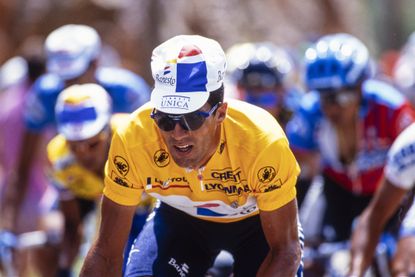
The Tour de France started on July 1, 1903 and has taken place almost every year since, only stopping for the two World Wars.
The first addition was won by French rider, Maurice Garin and it wasn't until 1909 before a rider from another country took the win, François Faber of Luxembourg.
Four riders share the record for most wins at the race , all winning on five occasions. These riders are Jacques Anquetil, Eddy Merckx, Bernard Hinault and Miguel Indurain.
British rider, Chris Froome , has won the race four times over the period of 2013 to 2017 and he still searches for that record equalling fifth overall title.
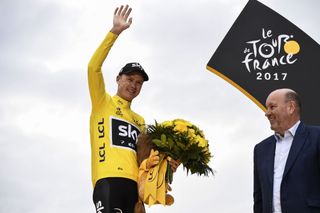
The race history in the early 2000s is very much tainted by the organised doping circle that enabled American rider Lance Armstrong to dominate the race between 1999 and 2006.
Armstrong won the race seven times but it was later discovered that he had used performance enhancing drugs, including blood-booster EPO. His titles were stripped from him in 2012 after a US Anti-Doping Agency investigation.
The green jersey, won by the sprinters, was first introduced to the race in 1953, where it was won by Swiss rider, Fritz Schär.
Get The Leadout Newsletter
The latest race content, interviews, features, reviews and expert buying guides, direct to your inbox!
In more recent years, it has been dominated by the Slovakian rider, Peter Sagan , who hold the record of seven wins over an eight year period.
>>> Tour de France jerseys: Yellow, green, white and polka-dot explained
Sagan has only failed to win the green jersey once, with Australian Michael Matthews claiming the title after Sagan was disqualified in 2017 for causing Mark Cavendish to crash.
Before Sagan took the record for himself it was previously held by German, Erik Zabel who won the jersey six years in a row between the years of 1996 and 2001.
Mark Cavendish remains the only rider from Great Britain to have won this title.
The polka-dot king of the mountains jersey wasn't awarded until 1933, though there had been an unofficial award handed out beforehand for the 'meilleurs grimpeurs' (best climber) since 1905, when René Pottier was given the award.
The first mountains jersey was awarded to the Spaniard, Vincente Trueba and has since been battled for by riders in breakaways or the riders involved in GC.
Frenchman, Richard Virenque has won this classification the most times with seven wins to his name.
In recent years, the French have dominated with a home rider winning the jersey five times in the last 10 years.
Chris Froome and Robert Millar are the only British riders to have taken the jersey.
The white best young rider jersey was not part of the race until 1975 when it was won by the Italian, Francesco Moser.
Before then the white jersey was the combined classification jersey. This was in the race between 1968 to 1974.
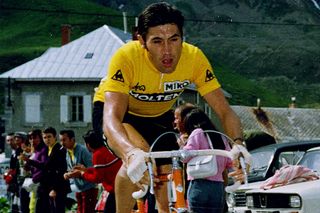
Originally this jersey came in as the best neo-pro rider where riders who had only been pro for three or less years could compete for the jersey.
The rules changed in 1983 where it was changed to one-year pros only but in 1989 the rules were changed again. Riders could compete for the jersey if they were younger than 26 on January 1 of the year they raced the Tour.
German and Luxembourgish stars, Jan Ullrich and Andy Schleck hold the record for the most wins in this category after winning three times each.
Adam and Simon Yates are the only British riders to win the jersey. The identical twins took the jersey in 2016 and 2017 with Adam winning first.
The record for most stage wins is held by the Belgian Eddy Merckx with 34 wins to his name. Only one other rider has got to the 30+ mark and that is Mark Cavendish who has won 30 stages.
Thank you for reading 20 articles this month* Join now for unlimited access
Enjoy your first month for just £1 / $1 / €1
*Read 5 free articles per month without a subscription
Join now for unlimited access
Try first month for just £1 / $1 / €1
Founded in 1891, Cycling Weekly and its team of expert journalists brings cyclists in-depth reviews, extensive coverage of both professional and domestic racing, as well as fitness advice and 'brew a cuppa and put your feet up' features. Cycling Weekly serves its audience across a range of platforms, from good old-fashioned print to online journalism, and video.

Mechanic to pros and amateurs alike, Glen Whittington shares his tips for the successful de-hibernation of your bike
By Glen Whittington Published 16 April 24
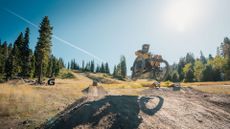
The High Fives Foundation provides athletes with spinal cord injuries with adaptive bikes and bike camps across the country.
By Kristin Jenny Published 16 April 24
Useful links
- Tour de France
- Giro d'Italia
- Vuelta a España
Buyer's Guides
- Best road bikes
- Best gravel bikes
- Best smart turbo trainers
- Best cycling computers
- Editor's Choice
- Bike Reviews
- Component Reviews
- Clothing Reviews
- Contact Future's experts
- Terms and conditions
- Privacy policy
- Cookies policy
- Advertise with us
Cycling Weekly is part of Future plc, an international media group and leading digital publisher. Visit our corporate site . © Future Publishing Limited Quay House, The Ambury, Bath BA1 1UA. All rights reserved. England and Wales company registration number 2008885.
A history of foreign starts at the Tour de France
As Copenhagen marks the 24th foreign Grand Départ, we take a look back at memorable starts through the years
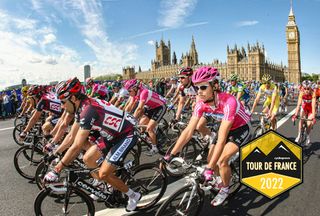
Friday's Tour de France Grand Départ in the Danish capital of Copenhagen will mark the 24th time the race has kicked off with a start outside of its home country, a tradition dating back all the way to 1954.
The 2022 Tour start will be the most far-flung yet, even if it doesn't quite match up to the Giro d'Italia's starts in Greece and Israel over the years. It's the first time the race – or any Grand Tour – has started in Denmark.
Over the past 68 years, the Tour has begun in almost every major western Europe country, barring Italy (which could host the 2024 Grand Départ ). The likes of Switzerland, Ireland, Germany, and Spain have all hosted Tour starts in that time.
This weekend, the peloton will take in three stages in Denmark, with a time trial and two sprints on the menu before they fly back to the north of France on Monday. Ahead of the 2022 start and all the action that lies ahead, we've taken a look back at some of the most memorable Grand Départs of years gone by.
1954: Amsterdam, Netherlands
The 1954 Tour would eventually be won by Louison Bobet, the second victory of the first Tour three-peat. The Frenchman was already on the podium on stage 2, winning as the peloton raced from the Flemish city of Beveren to Lille in northern France.
A day earlier, the race had kicked off in Amsterdam, where Dutch rider Wout Wagtmans gave the home crowds something to celebrate as he took the second of four career stage victories at the race just over the Belgian border in Brasschaat.
Massive crowds lined the roads for the opener, which saw Wagtmans attack to the win late on, just about holding off the peloton. He would hold yellow for three days before ceding it to Bobet, and later enjoyed another four days in the lead as the race snaked down to the Pyrenees. (DO)
Get The Leadout Newsletter
The latest race content, interviews, features, reviews and expert buying guides, direct to your inbox!
1973: Scheveningen, Netherlands
Joop Zoetemelk had already stood on the final Tour de France podium on two occasions before he had the opportunity to start the 1973 Tour – his fourth – at home, just minutes away from his hometown of The Hague.
He hadn't won a stage of the race by this point, having already accrued two runner-up spots in addition to his two overall second places, but pulled out all the stops on home ground for the short 7.1km prologue.
Under 10 minutes after setting off, Zoetemelk would have his first career Tour stage win, getting the beating of 'the eternal second' Raymond Poulidor by just one second.
He'd end the race fourth overall, and would have to wait seven more years to seal the yellow jersey, while the 1973 race spent three more (half) stages working its way across the Netherlands and Belgium, including a mini 12.4km time trial. (DO)
1987: West Berlin, Germany
By the late 1980s, the Tour was regularly visiting neighbouring countries for Grand Départs, with three in the Netherlands, two apiece in Belgium, and West Germany, and one in Switzerland.
1987 brought a third start in West Germany, and what would be the final visit to the country before reunification. It would be the most far-flung Tour start at the time, and there would be a full five days of racing in Germany before the race even hit the border and returned to France.
A 6km prologue on the opening day brought glory for Dutchman Jelle Nijdam, who utilised two disc wheels to take the win by three seconds as eventual race winner Stephen Roche rounded out the top three.
Nijdam's countryman Nico Verhoeven won stage 1, sprinting home from a small breakaway group, while Roche's Carrera Jeans squad beat Saronni's Del Tongo in the stage 2 time trial.
Portuguese rider Acácio Da Silva and solo breakaway man Herman Frison won stage 3 and 4 into Stuttgart and Pforzheim before the race headed to Strasbourg on stage 5, concluding what would be the last Grand Départ in Germany for three decades. (DO)
1992: San Sebastián, Spain

While the Vuelta a España was at this point in the midst of what would be a 33-year avoidance of the Basque Country (the race returned in 2011), the Tour chose the region to host its first Spanish Grand Départ three decades ago.
The prologue was overshadowed by a bombing in an underground car park in Fuenterrabia the night before, a reminder of the tensions in the region that saw the Vuelta stay away.
The race itself, however, went off without any such problems, and was instead a celebration of reigning champion Miguel Indurain, who hailed from the town of Villava in the eastern Basque Country.
The Banesto leader duly pleased the home crowds with a victory in the 8km prologue, beating ONCE's Alex Zülle by two seconds. Indurain would cede the lead to the Swiss rider on the first road stage a day later, though he'd be back in yellow in the Alps en route to a dominant four-minute overall victory. (DO)
1998: Dublin, Ireland
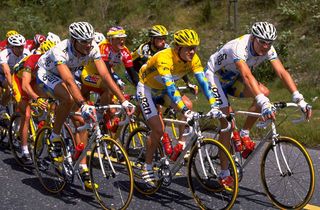
The 1998 Tour start in Ireland was not completely overshadowed by the Festina scandal that almost caused the entire race to grind to a halt, but the storm clouds were looming fast.
Festina soigneur Willy Voet had been arrested earlier that week on the French border with a trunkload of doping products in his car, the team had already gone into full denial mode over his whereabouts, and riders were already pouring their doping products down the wash-basins and toilets of their hotels.
Given the meltdown that then unfolded in that Tour, with the glorious gift of hindsight it almost seemed irrelevant that Chris Boardman claimed his third Tour prologue win in five years on a rain=soaked Dublin Friday evening. Or indeed that Boardman, while in the leader’s jersey, then crashed out en route to Cork and the ferries assembled to take the race back to France that evening.
But at the time, the massive crowds that lined the route in Dublin despite the weather, and again on the stages taking the race inland that followed, seemed to hold out hope that the Tour start in Ireland would be remembered as a success. But that was all quickly eclipsed by what unfolded in France. (AF)
2007: London, United Kingdom

Pre-empting the British cycling explosion that saw the founding of Team Sky, the 2012 Olympic Games, and the rise to superstardom of Mark Cavendish, Bradley Wiggins, Geraint Thomas, and Chris Froome, the Tour headed to Britain for the first time 15 years ago.
The home start came a year too early for Cavendish, who broke out with four stages in 2008, though time triallists Wiggins and David Millar – as well as Liquigas domestique Charly Wegelius and Barloworld neo-pro Thomas were also holding up the home end.
Wiggins and Millar were both among the favourites for the opening prologue around the streets of central London, though it was Swiss star Fabian Cancellara who dominated the day (as he had in 2004 and as he would in 2009, 2010, and 2012) to win by 13 seconds as Wiggins was the top Brit in fourth.
The next day Millar gave home crowds something to cheer, taking the polka dot jersey from the break on the flat stage to Canterbury as Robbie McEwen sprinted to victory. Three weeks later, Alberto Contador claimed his first Tour win after a controversial race which saw Iban Mayo, double stage winner Alexandre Vinokourov, and yellow jersey Michael Rasmussen all leave the race under doping clouds. (DO)
2010: Rotterdam, Netherlands
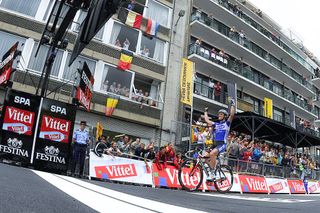
Three days across the Low Countries kicked off the 2010 Tour as the Netherlands hosted the Grand Départ for the fifth time.
Once again it was Fabian Cancellara's time to shine as the Swiss rider, hot off a superb spring with wins at E3 Harelbeke, the Tour of Flanders, and Paris-Roubaix, beat Tony Martin by 10 seconds over the 9km course in Rotterdam.
Alessandro Petacchi shot to sprint glory on stage 2 in Brussels, while the hilly third stage to Spa was perhaps the most memorable of the lot. There, Sylvain Chavanel soloed to the yellow jersey as the peloton staged a go-slow after the carnage and mass crashes on the wet, slippery roads.
The Frenchman would hand yellow back to Cancellara the next day as the race hit France – and the cobbles of Paris-Roubaix – but would be back in the lead for another day with another breakaway win on stage 7. In Paris, it was Alberto Contador (later Andy Schleck) who took the overall glory. (DO)
2014: Leeds, United Kingdom
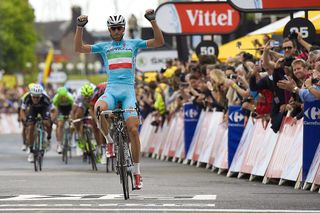
Seven years on from the London start, the Tour revisited the UK once more, with two days in Yorkshire followed up by one into London before the race travelled back across the Channel.
It was the year following the triumphs of Wiggins and Froome, and so the roads of Yorkshire were packed with fans there to cheer on Team Sky as well as Cavendish, who by that point had 26 Tour stage wins to his name.
As was the case in 2007, though, there would be little home glory for the Brits. In Harrogate and London, Marcel Kittel, the dominant sprinter of the previous year, would take the wins, while eventual winner Vincenzo Nibali nipped away to stage 2 victory in the hills of Sheffield.
Cavendish, meanwhile, left the race after stage 1 after crashing hard in Harrogate, while defending champion Froome made it to France and the cobbled stage – but not the cobbles – 5 before crashing out.
The Grand Départ had a lasting effect on cycling in the region, spawning the Tour de Yorkshire men's and women's race before COVID-19 and financial problems saw both events cancelled from 2020 through this year. (DO)
2019: Brussels, Belgium

The last Tour to start outside of France came three years ago with the fifth Grand Départ from Belgium – the first time the race had kicked off in the capital, Brussels, since 1958.
The city hosted both the opener and the second stage of the race, before a third stage from the Walloon town of Binche took the peloton on a hilly stage into France.
Jumbo-Visma dominated the first two days of the race as Wout van Aert (who would later win stage 10 in Albi) making his Tour debut. The opening stage, which featured the Muur van Geraardsbergen early on, would be prime Van Aert territory today, but then it was Dylan Groenewegen set to sprint for the Dutch squad.
He was taken down by a mass crash late on, though, and instead it was Mike Teunissen who took a surprise victory, holding off Peter Sagan and Caleb Ewan to take yellow. The squad would go on to dominate the stage 2 TTT, too, putting a full 20 seconds into second-placed Ineos over the 27.6km course. (DO)
Foreign starts at the Tour de France

Thank you for reading 5 articles in the past 30 days*
Join now for unlimited access
Enjoy your first month for just £1 / $1 / €1
*Read any 5 articles for free in each 30-day period, this automatically resets
After your trial you will be billed £4.99 $7.99 €5.99 per month, cancel anytime. Or sign up for one year for just £49 $79 €59

Try your first month for just £1 / $1 / €1
Dani Ostanek is Senior News Writer at Cyclingnews, having joined in 2017 as a freelance contributor and later being hired full-time. Prior to joining the team, they had written for numerous major publications in the cycling world, including CyclingWeekly and Rouleur.
Dani has reported from the world's top races, including the Tour de France, World Championships, and the spring Classics. They have interviewed many of the sport's biggest stars, including Mathieu van der Poel, Remco Evenepoel, Demi Vollering, and Anna van der Breggen.
As well as original reporting, news and feature writing, and production work, Dani also oversees How to Watch guides and works on The Leadout newsletter throughout the season. Their favourite races are Strade Bianche and Paris-Roubaix and their favourite published article is from the 2024 edition of the latter: 'Unless I'm in an ambulance, I'm finishing this race' – Cyrus Monk, the last man home at Paris-Roubaix
Ardennes Classics - Could SD Worx's distraction over Demi Vollering's future prevent a triple crown repeat?
Ashlin Barry pursues family racing tradition, 2028 Olympics already a goal
Tyler Stites wins Redlands Bicycle Classic for third year in a row
Most Popular
- Tour de France
- Giro d'Italia
- La Vuelta ciclista a España
- World Championships
- Amstel Gold Race
- Milano-Sanremo
- Tirreno-Adriatico
- Liège-Bastogne-Liège
- Il Lombardia
- La Flèche Wallonne
- Paris - Nice
- Paris-Roubaix
- Volta Ciclista a Catalunya
- Critérium du Dauphiné
- Tour des Flandres
- Gent-Wevelgem in Flanders Fields
- Clásica Ciclista San Sebastián
- INEOS Grenadiers
- Groupama - FDJ
- EF Education-EasyPost
- Decathlon AG2R La Mondiale Team
- BORA - hansgrohe
- Bahrain - Victorious
- Astana Qazaqstan Team
- Intermarché - Wanty
- Lidl - Trek
- Movistar Team
- Soudal - Quick Step
- Team dsm-firmenich PostNL
- Team Jayco AlUla
- Team Visma | Lease a Bike
- UAE Team Emirates
- Arkéa - B&B Hotels
- Alpecin-Deceuninck
- Grand tours
- Countdown to 3 billion pageviews
- Favorite500
- Profile Score
- Stage winners
- All stage profiles
- Race palmares
- Complementary results
- Finish photo
- Contribute info
- Contribute results
- Contribute site(s)
- Results - Results
- Info - Info
- Live - Live
- Game - Game
- Stats - Stats
- More - More
- »
Sprint | Jaulgonne (43 km)
Sprint | avancon (128.5 km), sprint | amagne (149.5 km), kom sprint | côte du charmel, kom sprint | côte de longwé, team day classification, race information.

- Date: 07 July 2003
- Start time: -
- Avg. speed winner: 40.026 km/h
- Race category: ME - Men Elite
- Distance: 204.5 km
- Points scale: GT.A.Stage
- Parcours type:
- ProfileScore: 73
- Vert. meters: 2461
- Departure: La Ferté-sous-Jouarre
- Arrival: Sedan
- Race ranking: 0
- Startlist quality score: 1688
- Won how: Sprint of large group
- Avg. temperature:
Race profile
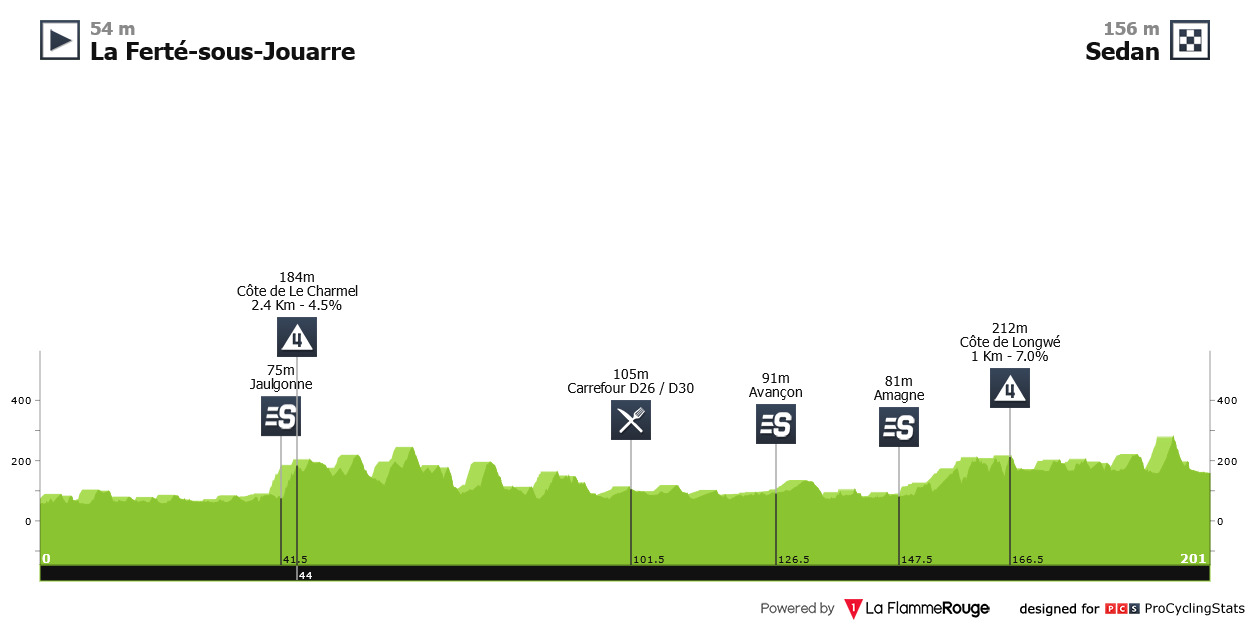
Grand Tours
- Vuelta a España
Major Tours
- Volta a Catalunya
- Tour de Romandie
- Tour de Suisse
- Itzulia Basque Country
- Milano-SanRemo
- Ronde van Vlaanderen
Championships
- European championships
Top classics
- Omloop Het Nieuwsblad
- Strade Bianche
- Gent-Wevelgem
- Dwars door vlaanderen
- Eschborn-Frankfurt
- San Sebastian
- Bretagne Classic
- GP Montréal
Popular riders
- Tadej Pogačar
- Wout van Aert
- Remco Evenepoel
- Jonas Vingegaard
- Mathieu van der Poel
- Mads Pedersen
- Primoz Roglic
- Demi Vollering
- Lotte Kopecky
- Katarzyna Niewiadoma
- PCS ranking
- UCI World Ranking
- Points per age
- Latest injuries
- Youngest riders
- Grand tour statistics
- Monument classics
- Latest transfers
- Favorite 500
- Points scales
- Profile scores
- Reset password
- Cookie consent
About ProCyclingStats
- Cookie policy
- Contributions
- Pageload 0.0789s
- Help Center
- Chat with a Ride Guide
- 1-866-401-9636
- Retail Store
- Bike Services
Reset Password
We will send you an email to reset your password.
Don't have an account? Create an account
Create Account
Already have an account? Sign In
- Favorite your products & save them to your account
- Save a search & get notified when new products drop
- Be first to know about the latest events & promotions
Bike Finder
Results have arrived, the history of tour de france bike tech.
Pure talent isn’t enough to win the Tour de France. You need a fast bike too (just ask Greg LeMond!). This is the history of aero, carbon fiber, and electronic drivetrains, plus a look at future tech like 1x drivetrains and graphene.
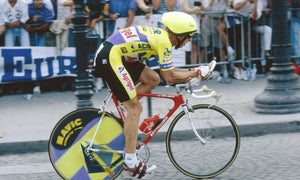
Written by: Bruce Lin
Published on: Jun 26, 2023
Posted in: Road
Pure talent isn’t enough to win the Tour de France . To compete against the world’s best, you need a good team, some good luck, and a very, very good bike . For bike nerds, the Tour is the best place to see the latest and greatest bike tech in action.
The basics of a road race bike haven’t changed — two wheels, a frame, and pedals. The bicycle has evolved a lot in 120 years, but over the last 30, there have been huge leaps forward in bike design and construction. These technological shifts have shaped modern Tour de France bikes into the pedal-powered rocket ships they are today.
As we watch the Tour and ogle the flashy new bikes , let’s look back at the history behind three of the biggest technological shifts in the Tour: aerodynamics , carbon fiber , and electronic drivetrains . We’ll also take a quick peek at three pieces of new tech we’ll see on Tour de France winning bikes in the future.
[button] SHOP ROAD BIKES [/button]
The Age of Aero: Aero Road Bikes
Since the late 1800s, cyclists have understood that air resistance is the greatest force to overcome. Drop handlebars were perhaps the original aero component, allowing riders to get in lower positions. The first aerodynamic disc wheel dates all the way back to 1895. And in the early 1900s, riders were trying to set the hour record using bikes equipped with aerodynamic fairings before the UCI outlawed them.
Largely due to the UCI’s restrictive regulations, aero bike design stagnated for decades. But in the early 1970s, bike builders began experimenting with aerodynamic frame tubing and designs that could fit within the regulations.

Aerodynamics finally reached the tipping point in the 1989 Tour de France. American Greg LeMond trailed French rider Laurent Fignon by 50 seconds. Commentators thought this deficit was too large for LeMond to close. So, with nothing to lose, LeMond made the bold decision to put aero bars on his bike and to wear an aero helmet for the final time trial.
LeMond’s critics called these new devices ugly and unsafe, questioning if they would make any difference. But he won the stage and, more importantly, beat Fignon in the general classification by eight seconds — the smallest winning margin in history. With an average speed of 54.545kp/h (34.52mph), it was also the fastest time trial ever ridden in the Tour.
[newsletter]
This was the beginning of the aero revolution. Aero bars and aero helmets are now standard equipment in time trials.
Steel was the de facto frame material for over 100 years, but aero steel tubing never really caught on due to the cost, weight, and fabrication challenges. Manufacturers began experimenting with aluminum and carbon fiber frames that were lighter and easier to form, allowing designers to create competitive frames with deep airfoil-shaped tubes.

In 2001, Canadian brand Cervélo introduced the Soloist, which claimed to be the first, true aero road bike. With its “crushed tube” shaping, the Soloist claimed to have 4-6x less drag than traditional round-shaped tubes found on other bikes at the time. Radical geometry adjustments such as shortening the top tube while keeping a consistent seat tube angle helped the rider achieve an aero-optimized riding position as well. Until then, aero frame designs had mostly been limited to track, time trial, and triathlon bikes. In 2003. Cervélo sponsored Team CSC, and several CSC riders used the Soloist on flat stages of the Tour.
The Soloist may seem tame now, but at the time, many were shocked by the enormous three-inch-wide down tube, and the prominent airfoil tube shapes.
Not only did it have groundbreaking aerodynamics, but the early model was one of the few aluminum frames that achieved success against carbon fiber rivals, with a claimed weight of 16 pounds (more on that later). American Bobby Julich used the aluminum Soloist to win Criterium International and Paris-Nice in 2005.
[button] Shop Cervelo [/button]
Aero designs also received a boost when the UCI introduced the 6.8 kg (14.99 lb) minimum weight limit for racing bikes in 2000, still in place today . Bike manufacturers were already able to build bikes below the weight limit — the lightest frames weighed around 700g — but with the new restriction, riders couldn’t use them in competition. Thus, advantages needed to be found elsewhere. Chasing aerodynamic gains was the obvious answer.

Aero bikes like the Specialized Venge, first released in 2011 , took off in popularity, especially after Mark Cavendish and Peter Sagan rode them to several stage victories in the Tour. With its “teardrop-shaped tubes” and a claimed weight of 15 pounds, thanks to FACT 11r carbon, the Venge was the company’s first aero-specific superbike.
Now manufacturers spend large amounts of time and money on computational fluid dynamics and wind tunnel testing to develop new, more slippery bikes.
“Other than fitness, aerodynamics is the most important single factor that influences your speed on a road bike,” says Mio Suzuki, Senior R&D Engineer leading aerodynamics at Specialized. “As low as 13mph you’ll begin to see speed benefits. Pros riding 20-30mph see an even bigger benefit. There's no question, [aero bikes] definitely make you faster.”
Even GC-winning all-rounders like the Specialized Tarmac and the Pinarello Dogma use extensive wind tunnel testing and aero shaping to gain a subtle advantage. With an increase in aero-optimized performance across all their road bikes, Specialized eventually dropped the Venge in their lineup as the Tarmac SL7 took over the top spot as their aero-race bike in 2022. To stay competitive in the modern Tour de France peloton, all bikes have to use some form of aero shaping.
[button] Shop Specialized [/button]

Lighter, Stronger, Faster: The Rise of Carbon

The last non-carbon bike to win the Tour de France was Marco Pantani’s aluminum Bianchi Mega Pro XL Reparto Corse in 1998. The Mega Pro XL weighed a mere 15 pounds, utilizing titanium parts and tubular wheels. For the last 20 years, carbon fiber has dominated professional cycling. Now, every bike in the Tour de France peloton is carbon, and that probably won't change.
Carbon fiber originated in the aerospace industry. It's made of loose fibers composed of carbon atoms that are suspended in resin. As mentioned earlier, carbon is a perfect material for constructing lightweight aero frames because it’s easy to form into complex aerodynamic shapes.
But there’s more to the story than that. Carbon is extremely strong for its weight, and it can be engineered to behave differently in different directions. You can design a carbon frame to be rigid in a specific direction, or rigid torsionally, while still having compliance in a different direction.

"There is absolutely no doubt that, as a structural material, carbon is the best one for bicycles,” says Sam Pickman, director of product at Allied Cycle Works . “If you want to change how a metal bike feels, you have very little variables to play with. You have the thickness of the material and tube size.”
“With carbon, you unlock a whole different world,” Pickman says. “What it allows you to do is change and tweak the characteristics that affect how a bike feels along the tube to hone it to do pretty much whatever you want it to do. It just gives you an unbelievable amount of control."
Carbon bikes can be designed to have desirable properties like aero shaping, light weight, and targeted stiffness, without compromising strength or comfort. Comfort may not seem like the most important trait for pro riders, but it can help riders arrive at the finish with less fatigue from road vibration and impacts. That adds up over 21 days of racing.
Bike manufacturers like Peugeot in France and Kestrel in the U.S. began experimenting with carbon frames in the early 1970s. There was a steep learning curve and it would be several years before modern monocoque frames came to market.
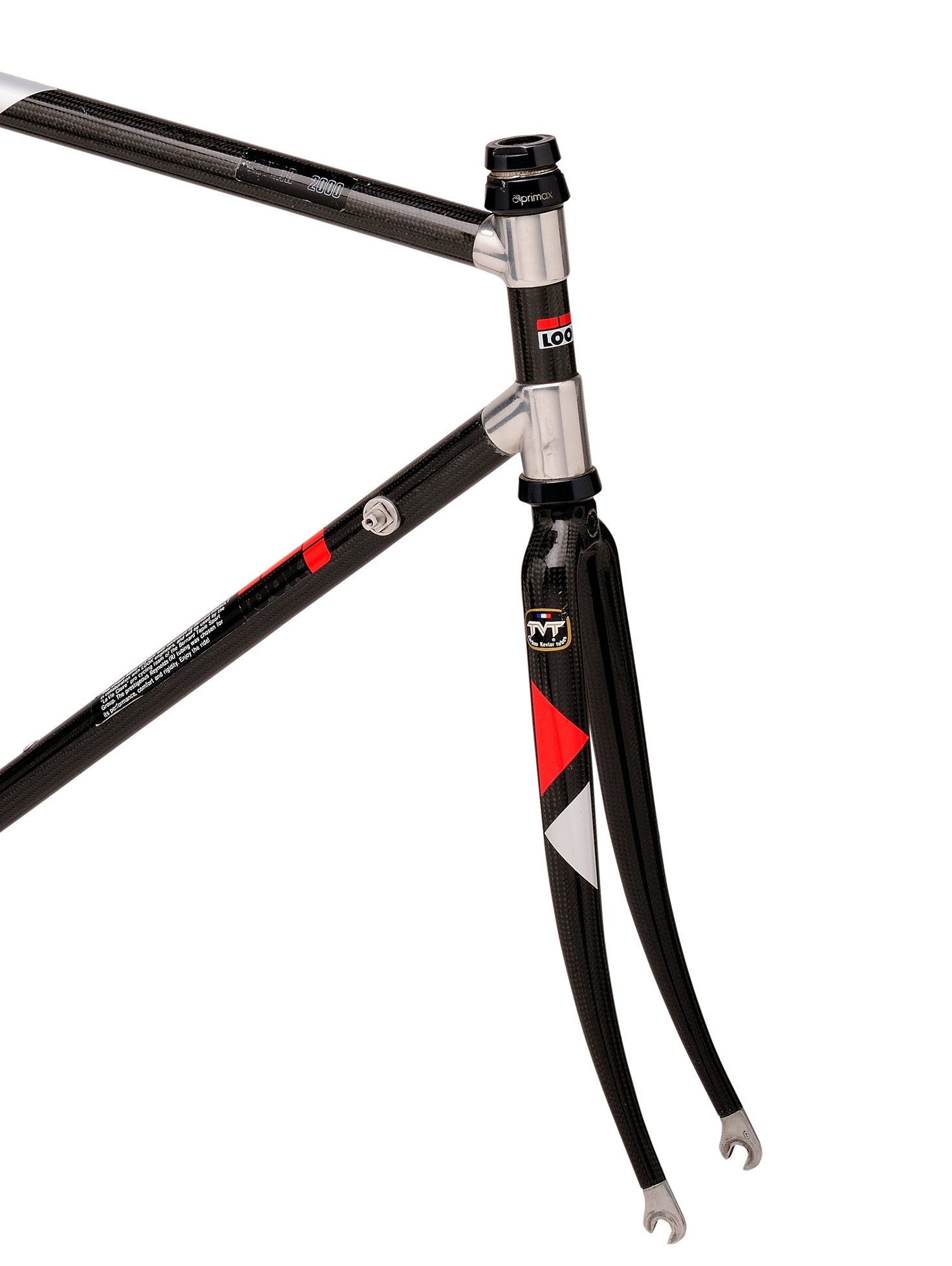
French manufacturer, Look , made its first carbon frame, the KG 86, with a lugged construction. The carbon tubes were made by a French company, TVT, which combined Kevlar with layers of woven carbon fiber for additional strength. The tubes were then bonded with epoxy into aluminum lugs. The KG 86 achieved legendary status when Greg LeMond (yes, LeMond again!) rode it to victory in the 1986 Tour de France. It was the first carbon bike to win the Tour. The precise quality of this 100% handmade bike made it just as good to look at as it was to ride, with the claimed weight being 16 pounds.
Steel and aluminum Pinarellos would dominate for the next decade, but after Marco Pantani’s 1998 Tour win, carbon came into fashion with the advent of Lance Armstrong. Though later stripped of his victories, Armstrong collected seven yellow jerseys aboard Trek ’s OCLV carbon fiber frames. OCLV stands for “Optimum Compaction Low Void” and refers to Trek’s process of placing carbon fiber sheets into a frame mold.

Armstrong won the 1999 Tour on a Trek 5500. (Interesting tidbit: Thanks to Armstrong, 1999 was also the first-ever Tour victory for a Shimano-equipped bike.) Armstrong continued using Trek's 5000 series OCLV carbon frames until the carbon Trek Madone was released in 2003 (though he didn’t race it in the Tour until 2004). The first Madone had an average weight of about 16 pounds, whereas the modern Madone weighs around 17 pounds depending on the size. Increased weights can be attributed to stronger carbon fiber layups and hydraulic disc brakes, a fair trade for powerful stopping capabilities, and increased frame stiffness.
In the last 30 years, Carbon has proliferated far beyond the Tour and the bike frame into every major component of the bike in all disciplines of cycling. For example, aerodynamic carbon wheels are standard equipment for professional racers. You will see plenty of pro bikes with carbon stems, handlebars, and seatposts. Now, it’s unlikely that we will ever see a non-carbon bike win the Tour again. There is a chance though, we’ll see some new carbon composites win in the future, but more on that later.
[button] SHOP CARBON ROAD BIKES [/button]
Battery-Powered: Electronic Drivetrains
Derailleurs have been around nearly as long as the bike itself. Derailleur systems were already being designed and built in the late 1800s, but Tour de France founder Henri Desgrange didn’t allow riders to use derailleurs in the Tour until 1937. He was afraid the technology would make the race too easy. Before derailleurs, riders had two cogs on their rear hub and they had to stop and flip the rear wheel around to change their gearing.

Until very recently, all derailleurs were actuated using cables. Then, in 2009, Shimano unveiled its Dura-Ace Di2 electronic drivetrain . SunTour, Mavic , and Campagnolo had all experimented with electronic drivetrains in the ‘90s and early ‘00s. But Dura-Ace Di2 was the first commercially viable electronic drivetrain. Shimano’s Di2 groupsets radically improved shifting with only a minor weight penalty of about 80g vs their mechanical counterparts.
It ignited an electronic drivetrain revolution. Other manufacturers soon followed suit with Campagnolo releasing Super Record EPS and Record EPS in 2011, and SRAM releasing Red eTap in 2015.
For racing, electronic shifting provides a clear advantage.
“The biggest advantage is just how easy it is to shift,” says JP McCarthy, Road Product Manager for SRAM. “It may sound like a small thing, but cycling is a sport obsessed with marginal gains. Bikes are so good now that performance gains have to be squeezed out of the tiniest details. By making the act of shifting just a bit less physically or mentally demanding, an electronic drivetrain can allow riders to dedicate more focus and energy to other tasks like handling and producing power.”

Electronic groups also produce more consistent shifts.
“The [electric] motors on the derailleurs actuate at the same rate every time,” says Nick Legan, Road Brand Manager for Shimano North America. “You will hit the gear you want every time, perfectly. It does give you a competitive edge.”
“An electronic setup is actually exceptionally weatherproof,” says Legan. “You don’t have to worry about water, grit, and mud. As long as there's power in the battery, the shifting doesn't degrade.”

Despite these claims, many pros were initially hesitant to go electronic, fearing reliability issues. Then in 2011, Cadel Evans broke through . Not only did he become the first Australian to win the Tour, but he was the first to win with an electronic drivetrain. His BMC Teammachine SLR01 was equipped with Shimano Dura-Ace Di2, and he suffered no Di2-related mechanicals on his path to victory.
In 2012, Bradley Wiggins backed up this success by winning the Tour with a Dura-Ace Di2 equipped Pinarello Dogma 65.1. Amazingly, nine of the last ten Tours have been won using an electronic drivetrain (Vincenzo Nibali won in 2014 with a mechanical Campagnolo Super Record drivetrain).
With all the current Tour de France GC favorites on electronic drivetrains , it's clear that it’s the new standard.
“If you're looking for every little last performance advantage, electronic is the only way to go,” says Legan. “it is just a little bit faster, and a little consistent than a mechanical setup. At that level, it really matters.”
“The pros don't ride mechanical anymore,” says McCarthy. “At some point, you won’t see mechanical bikes winning any major races anymore.”
[button] SHOP ELECTRONIC ROAD BIKES [/button]
What to look for in future of Tour de France bikes
1x drivetrains.
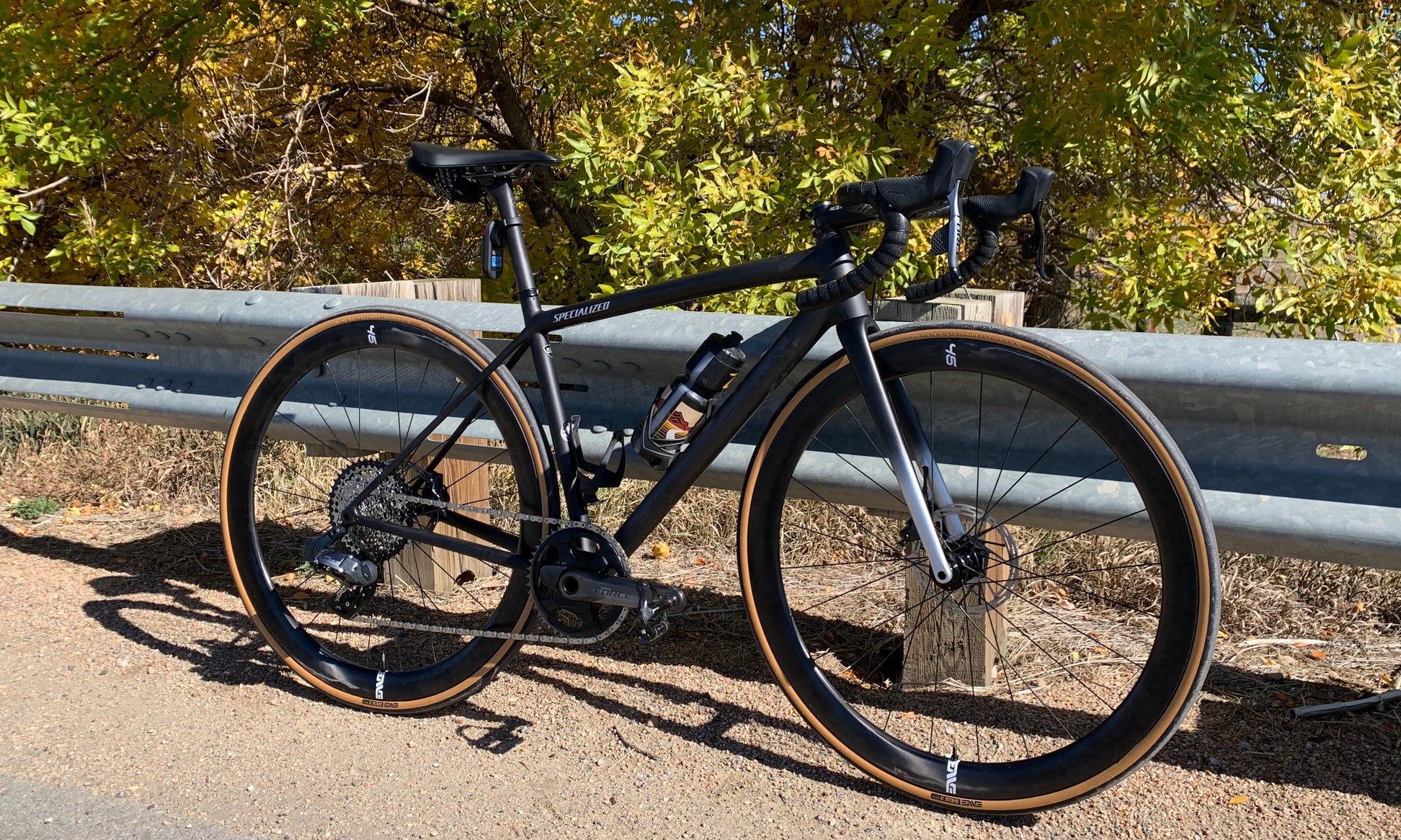
I've been talking up 1x road drivetrains for years, and we've already seen them make brief appearances in 1-day races and even Grand Tour stages. The big, and most recent example that I'm thinking of is Primoz Roglic , who switched to a 1x-equipped road bike for the Stage 20 uphill time trial in the 2023 Giro d'Italia.
There will ALWAYS be 1x haters out there (plenty were quick to mock the chain drop Roglic experienced during his TT), but pro teams and racers aren't concerned with armchair engineers. They just want to go as fast as possible. In Roglic's case, he needed a bike perfectly set up to climb steep grades as fast as possible. The 1x drivetrain gave him super easy gearing, and helped him to overturn a 26-second deficit on Geraint Thomas to take the win.
Will 1x drivetrains work in every scenario? Heck no. They only make sense in purely uphill or purely flat stages (and TTs) where riders and mechanics can optimize the gearing for the stage. But since Grand Tours can be won and lost by a few seconds, it makes more and more sense to optimize bikes for single key moments. They may or may not show up in this year's Tour de France, but expect 1x road bikes to make plenty more cameos in the coming years.
Tubeless tires
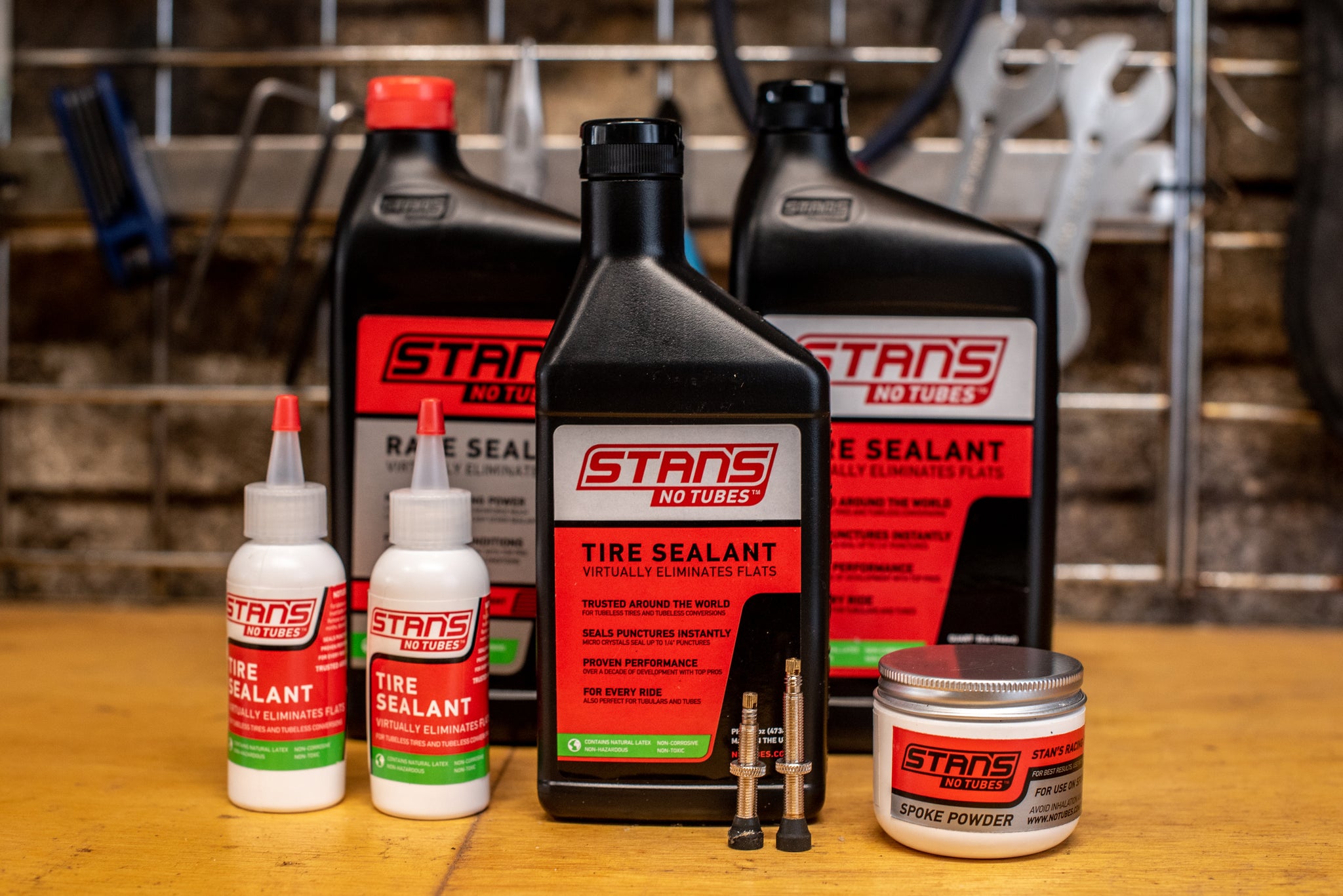
In 2019, Deceuninck–Quick-Step rider Fabio Jakobsen won a stage at the Tour of California on tubeless tires. This was a historic win since tubular tires have been the standard in professional racing over 100 years. It's not just Quick-Step now. In the last 4 years, tubeless tires have made their way deeper into into the peloton.
Specialized sponsored teams like Quick-Step are using the brands super-fast S-Works Turbo RapidAir tire. The defending champs, Jumbo-Visma, along with EF Education use Vittoria's Corsa Pro G2.0 tire. Ineos and UAE, the home of two-time winner Tadej Pogacar, are riding the Continental GP 5000 S TR this year. Many teams still run tubulars, but I would bet money that this year's Tour winner will ride the majority of the stages on a tubeless setup.
Tubeless technology has already become the standard for mountain and gravel bikes, and the benefits for rolling resistance, puncture protection, and serviceability are hard to ignore. I suspect tubeless will become the top choice for top racers and the Tour de France in the near future.
[button] SHOP TUBELESS ROAD WHEELS [/button]

This is the big one. Graphene is a new, super-strong material that could change carbon frame construction as we know it. It’s an allotrope, or a different form of carbon (carbon can also take the form of diamond, graphite, and charcoal). Explained more simply, it is a single atomic layer of graphite arranged in a two-dimensional honeycomb lattice.
Its primary use in cycling would be as a carbon fiber additive. It improves strength because it chemically bonds to both the resin and the carbon fiber, increasing the “interfacial shear strength.” Instead of the resin and carbon fibers being separate, you get a single material that is stronger and more uniform.
Frames made using graphene will be stronger and weigh up to 50% less. Also, graphene is incredibly conductive. There is potential to build graphene circuitry into graphene bike frames so riders can have built-in electronic drivetrain wires, integrated sensors, or other electronics.

Some manufacturers are already experimenting with putting graphene in frames and other cycling components. But it will likely be several years before we see these products hit prime time in races like the Tour de France. The UCI will likely need to change its restrictive weight limit for riders and manufacturers to take full advantage of graphene.
What did I miss? What's your opinion on disc brakes and tubeless tires in the Tour? What new tech are you excited to see? Let us know in the comments!
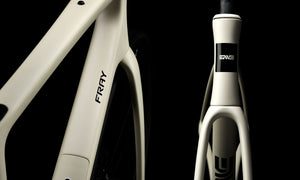
Bikes, Gravel, Latest, Road Apr 11, 2024
ENVE Fray: The Definitive All-Road Bike? The Coolest for Sure.
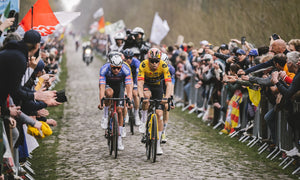
Fun, Latest, Opinion, Road Apr 5, 2024
Smart, Safe, and Silly Paris Roubaix Predictions for 2024 and Beyond
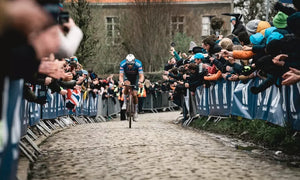
Bikes, Fun, Latest, Road Mar 29, 2024
What's the Best Bike at Tour of Flanders 2024?
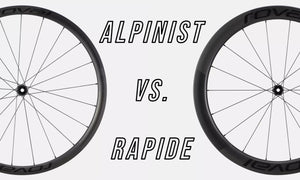
FAQs, Guides, Latest, Road Mar 14, 2024
FAQ: The Roval Alpinist CL II vs. Roval Rapide CL II
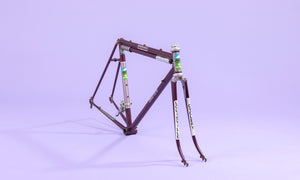
Features, Latest, Road, Vintage Mar 14, 2024
The First Frame I Ever Built
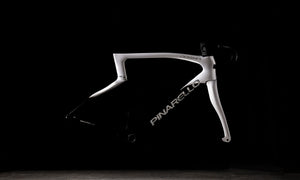
Features, Latest, Road Feb 28, 2024
For Some Reason the Pinarello Dogma F Lives in My Mind Rent Free
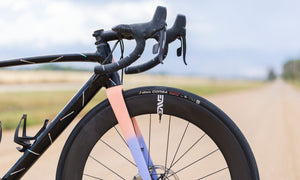
Guides, Latest, Road, Tech Feb 23, 2024
The Best Affordable Carbon Road Wheels for Budget Racers
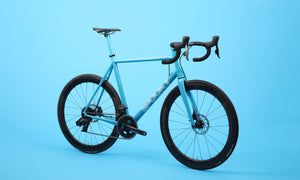
Bikes, Features, Road Jan 17, 2024
The Spooky MAVRK: Are These Aluminum Road Bikes History?
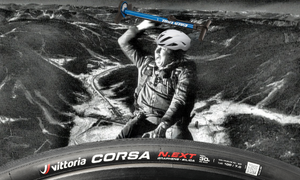
Opinion, Road Jan 15, 2024
How I Learned To Stop Worrying and Love Low Tire Pressure

Gravel, Guides, Road Jan 8, 2024
Cervélo Bike Guide: R5 vs. S5 vs. Soloist vs. Caledonia. Which is Right For You?
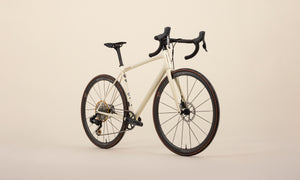
Bikes, Features, Road Dec 13, 2023
This 14-Pound Specialized Aethos Has a Wild 1x Drivetrain
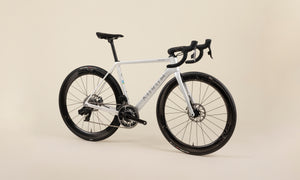
Bikes, Features, Road Dec 6, 2023
The Aurum Magma: Understated Hotness With Tour-Winning DNA
New arrivals.
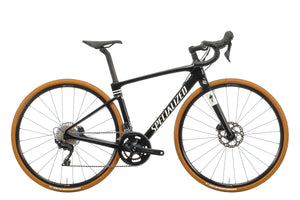
Certified Pre-Owned
Specialized Roubaix Sport Road Bike - 2021, 49cm
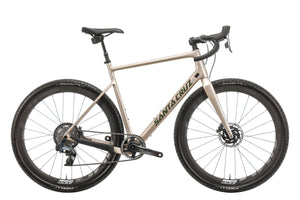
Santa Cruz Stigmata CC Gravel Bike - 2022, 58cm
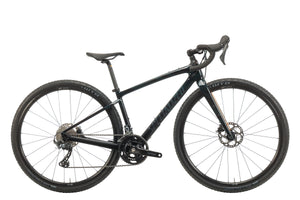
Specialized Diverge Sport Carbon Gravel Bike - 2020, 49cm
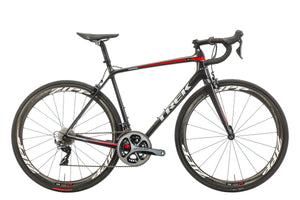
Trek Émonda SL 8 Road Bike - 2018, 56cm
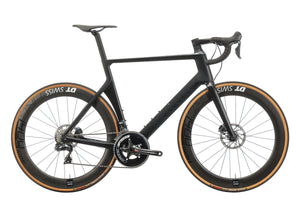
Canyon Aeroad CF SL Disc 8.0 Di2 Road Bike - 2021, X-Large
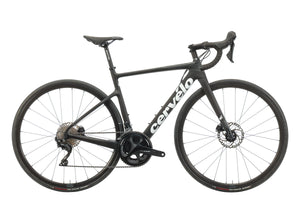
Cervélo Caledonia 105 Road Bike - 2021, 51cm
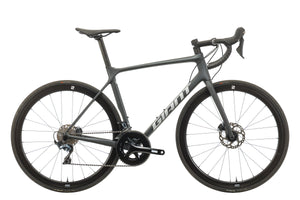
Giant TCR Advanced Disc 1+ PC Road Bike - 2021, Med/Large
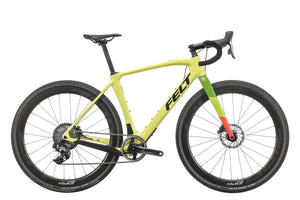
Felt BREED Advanced Force 1 eTap AXS Gravel Bike - 2023, 54cm
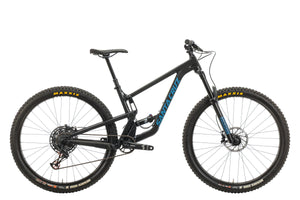
Santa Cruz Hightower D Aluminum Mountain Bike - 2022, Medium
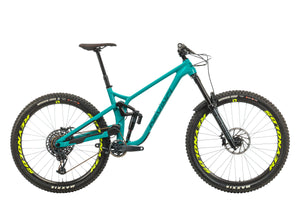
Devinci Chainsaw GX 29 Mountain Bike - 2023, Large
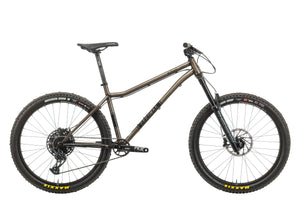
Chromag Stylus Mountain Bike - 2023, Large
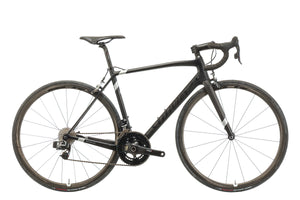
Wilier Triestina Zero.6 Road Bike - 2018, Medium
- History Classics
- Your Profile
- Find History on Facebook (Opens in a new window)
- Find History on Twitter (Opens in a new window)
- Find History on YouTube (Opens in a new window)
- Find History on Instagram (Opens in a new window)
- Find History on TikTok (Opens in a new window)
- This Day In History
- History Podcasts
- History Vault
The Birth of the Tour de France
By: Christopher Klein
Updated: May 8, 2023 | Original: June 28, 2013

On July 1, 1903, 60 men mounted their bicycles outside the Café au Reveil Matin in the Parisian suburb of Montgeron. The five-dozen riders were mostly French, with just a sprinkle of Belgians, Swiss, Germans and Italians. A third were professionals sponsored by bicycle manufacturers, the others were simply devotees of the sport. All 60 wheelmen, however, were united by the challenge of embarking on an unprecedented test of endurance—not to mention the 20,000 francs in prize money—in the inaugural Tour de France.
At 3:16 p.m., the cyclists turned the pedals of their bicycles and raced into the unknown.
Nothing like the Tour de France had ever been attempted before. Journalist Geo Lefevre had dreamt up the fanciful race as a stunt to boost the circulation of his struggling daily sports newspaper, L’Auto. Henri Desgrange, the director-editor of L’Auto and a former champion cyclist himself, loved the idea of turning France into one giant velodrome. They developed a 1,500-mile clockwise loop of the country running from Paris to Lyon, Marseille, Toulouse, Bordeaux and Nantes before returning to the French capital. There were no Alpine climbs and only six stages—as opposed to the 21 stages in the 2013 Tour— but the distances covered in each of them were monstrous, an average of 250 miles. (No single stage in the 2013 Tour tops 150 miles.) Between one and three rest days were scheduled between stages for recovery.
The first stage of the epic race was particularly dastardly. The route from Paris to Lyon stretched nearly 300 miles. No doubt several of the riders who wheeled away from Paris worried not about winning the race—but surviving it.
Unlike today’s riders, the cyclists in 1903 rode over unpaved roads without helmets. They rode as individuals, not team members. Riders could receive no help. They could not glide in the slipstream of fellow riders or vehicles of any kind. They rode without support cars. Cyclists were responsible for making their own repairs. They even rode with spare tires and tubes wrapped around their torsos in case they developed flats.
And unlike modern-day riders, the cyclists in the 1903 Tour de France, forced to cover enormous swathes of land, spent much of the race riding through the night with moonlight the only guide and stars the only spectators. During the early morning hours of the first stage, race officials came across many competitors “riding like sleepwalkers.”
Hour after hour through the night, riders abandoned the race. One of the favorites, Hippolyte Aucouturier, quit after developing stomach cramps, perhaps from the swigs of red wine he took as an early 1900s version of a performance enhancer.
Twenty-three riders abandoned the first stage of the race, but the one man who barreled through the night faster than anyone else was another pre-race favorite, 32-year-old professional Maurice Garin. The mustachioed French national worked as a chimney sweep as a teenager before becoming one of France’s leading cyclists. Caked in mud, the diminutive Garin crossed the finish line in Lyon a little more than 17 hours after the start outside Paris. In spite of the race’s length, he won by only one minute.
“The Little Chimney Sweep” built his lead as the race progressed. By the fifth stage, Garin had a two-hour advantage. When his nearest competitor suffered two flat tires and fell asleep while resting on the side of the road, Garin captured the stage and the Tour was all but won.
The sixth and final stage, the race’s longest, began in Nantes at 9 p.m. on July 18, so that spectators could watch the riders arrive in Paris late the following afternoon. Garin strapped on a green armband to signify his position as race leader. (The famed yellow jersey worn by the race leader was not introduced until 1919.) A crowd of 20,000 in the Parc des Princes velodrome cheered as Garin won the stage and the first Tour de France. He bested butcher trainee Lucien Pothier by nearly three hours in what remains the greatest winning margin in the Tour’s history. Garin had spent more than 95 hours in the saddle and averaged 15 miles per hour. In all, 21 of the 60 riders completed the Tour, with the last-place rider more than 64 hours behind Garin.
For Desgrange, the race was an unqualified success. Newspaper circulation soared six-fold during the race. However, a chronic problem that would perpetually plague the Tour de France was already present in the inaugural race—cheating. The rule-breaking started in the very first stage when Jean Fischer illegally used a car to pace him. Another rider was disqualified in a subsequent stage for riding in a car’s slipstream.
That paled in comparison, however, to the nefarious activity the following year in the 1904 Tour de France. As Garin and a fellow rider pedaled through St. Etienne, fans of hometown rider Antoine Faure formed a human blockade and beat the men until Lefevre arrived and fired a pistol to break up the melee. Later in the race, fans protesting the disqualification of a local rider placed tacks and broken glass on the course. The riders acted a little better. They hitched rides in cars during the dark and illegally took help from outsiders. Garin himself was accused of illegally obtaining food during a portion of one stage. The race was so plagued by scandal that four months later Desgrange disqualified Garin and the three other top finishers. It, of course, wouldn’t be the last time a Tour winner was stripped of his title.

Sign up for Inside History
Get HISTORY’s most fascinating stories delivered to your inbox three times a week.
By submitting your information, you agree to receive emails from HISTORY and A+E Networks. You can opt out at any time. You must be 16 years or older and a resident of the United States.
More details : Privacy Notice | Terms of Use | Contact Us

Subscription Offers
Give a Gift

Finish of the First Tour de France
Maurice Garin won the first Tour de France, on July 19th, 1903, by a margin of almost three hours.
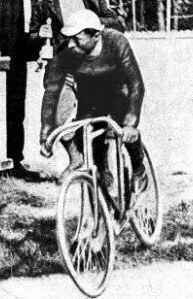
Products of the bicycling craze of the 1890s in France included an army regiment mounted on bicycles and numerous flourishing bicycle-connected businesses as well as a public appetite for races. Besides track events in ‘velodromes’, there were long-distance road races, from Paris to Vienna and St Petersburg, for instance, and from Paris to Rome. The Tour de France, which began as a newspaper circulation-booster, was an unexpected by-product of the Dreyfus Affair. In 1899 the bicycle newspaper Le Vélo , which sold 80,000 copies a day, ran a pro-Dreyfus piece that caused a fierce falling out with a major advertiser, the bicycle manufacturer Comte Dion. With other manufacturers, including Clément and Michelin, Dion started a rival sports sheet called L’Auto . The editor was Henri Desgranges, winner of the world one-hour record in 1893. When one of his assistants suggested a race round France, Desgranges saw the possibilities.
The first race in 1903 took nineteen days in six formidable stages, from Paris to Lyon, Marseille, Toulouse, Bordeaux, Nantes and back to Paris. The stages varied in length from 274km (170 miles) to as much as 467km (290 miles), with a total distance of just over 2400km (1,500 miles ). A parade of cars, festooned with advertising and throwing free samples to spectators, travelled two hours ahead of the cyclists. Of sixty competitors from France, Belgium, Germany and Switzerland, including professional team riders and freelance amateurs, twenty-one finished the gruelling course and the race was won by a Frenchman, Maurice Garin, ‘the Little Chimney-Sweep’, by a margin of close to three hours. The last finisher came in two days behind.
Garin also won the second race in 1904, but he and the next three finishers were all disqualified for cheating. The early races were notorious for mayhem. Riders strewed broken glass and nails in the road to cause punctures behind them, competitors were given drinks that made them sick, many got surreptitious tows from cars or motorbikes, some were held up and delayed by hired thugs. The excitement was intense and L’Auto ’s circulation more than doubled. Le Vélo went bankrupt.
Popular articles

When Nostalgia Was Deadly

Why Were the Jews Persecuted?

IMAGES
COMMENTS
The 2003 Tour de France was a multiple stage bicycle race held from 5 to 27 July, and the 90th edition of the Tour de France.It has no overall winner—although American cyclist Lance Armstrong originally won the event, the United States Anti-Doping Agency announced in August 2012 that they had disqualified Armstrong from all his results since 1998, including his seven Tour de France wins from ...
The 2003 Tour de France was the 90th edition and centenary of the Tour de France, one of cycling's Grand Tours.The Tour began in Paris on 5 July with a prologue individual time trial and finished on the Champs-Élysées, back in Paris, on 27 July.The Tour started with 22 teams of 9 cyclists each.
The 2003 Tour represented the 100th anniversary of the Tour de France. Armstrong won his fifth Tour, but was not the dominating rider he had been in his previous four victories. Richard Virenque joined Lucien van Impe and Federico Bahamontes in winning the Mountains classification for a sixth time. At 40.940 km/hr, the 2003 Tour was the fastest ...
The 2003 Tour de France was a multiple stage bicycle race held from 5 to 27 July, and the 90th edition of the Tour de France. It has no overall winner—although American cyclist Lance Armstrong originally won the event, the United States Anti-Doping Agency announced in August 2012 that they had disqualified Armstrong from all his results since 1998, including his seven Tour de France wins ...
The Tour de France (French pronunciation: [tuʁ də fʁɑ̃s]; English: Tour of France) is an annual men's multiple-stage bicycle race held primarily in France. It is the oldest of the three Grand Tours (the Tour, the Giro d'Italia, and the Vuelta a España) and is generally considered the most prestigious.. The race was first organized in 1903 to increase sales for the newspaper L'Auto and ...
The 2003 Tour starts on Saturday, July 5 at the Eiffel Tower in Paris with a prologue running along the banks of the Seine River, finishing at La Maison de la Radio. Stage 1 on Sunday, July 6, will see a neutral start at Stade de France, St Denis, travelling through the streets of Paris south to Montgeron's caf Le Reveil Matin.
William Fotheringham. Sat 26 Jul 2003 19.03 EDT. Three weeks ago, when the centenary Tour de France rolled away from Saint Denis to begin its 2,200-mile journey around the country, there was an ...
Lance Armstrong is the winner of Tour de France 2003, before Jan Ullrich and Alexandre Vinokourov. Jean-Patrick Nazon is the winner of the final stage. ... DNF=Did not finish / DNS=Did not start / OTL = Outside time limit / DF=Did finish, no result / NR=No result Rider wearing the jersey >50% of race distance in group before peloton.
Results for Tour de France 2003 Stage 4 (TTT). ... DNF=Did not finish / DNS=Did not start / OTL = Outside time limit / DF=Did finish, no result / NR=No result Rider wearing the jersey >50% of race distance in group before peloton. View top-25. View full result. Rnk
Lance Armstrong can equal the record for Tour victories but history and his years are against him, writes Wiiliam Fotheringham .
Tour de France 2003. This article is more than 20 years old. Lance Armstrong wins despite dramatic fall. This article is more than 20 years old. STAGE 15: BAGNERES-DE-BIGORRE - LUZ-ARDIDEN (159.5km)
By Euronews. Published on 27/06/2013 - 09:42. Share this article. 2013 is somewhat of a special year for the Tour de France, as it celebrates both its 100th edition and its 110-year anniversary ...
Tour de France, the world's most prestigious and most difficult bicycle race.Of the three foremost races (the others being the Giro d'Italia and the Vuelta a España), the Tour de France attracts the world's best riders. Staged for three weeks each July—usually in some 20 daylong stages—the Tour typically comprises 20 professional teams of 9 riders each and covers some 3,600 km ...
The Tour de France started on July 1, 1903 and has taken place almost every year since, only stopping for the two World Wars. The first addition was won by French rider, Maurice Garin and it wasn ...
Alexandre Vinokourov is the winner of Tour de France 2003 Stage 9, before Paolo Bettini and Iban Mayo. Lance Armstrong was leader in GC. ... DNF=Did not finish / DNS=Did not start / OTL = Outside time limit / DF=Did finish, no result / NR=No result Rider wearing the jersey >50% of race distance in group before peloton.
Prologue. 5 July 2003 — Paris, 6.5 km (4.0 mi) ()The opening stage was a short time trial.Covering just 6.5 km the route started under the Eiffel Tower, crossed the river, out to the Place de la Concorde and then back for a finish near to the start.. The trial was won by Bradley McGee of FDJeux edging out Scot, David Millar, by 0.1 seconds after Millar had briefly lost his chain in the last ...
Tour de France History: How Did The Tour de France Start? The first Tour de France was held in the year 1903.The inception of the race was largely motivated by an increase in sales for a French newspaper, stemming from the rivalry between two prevalent French newspapers at the time, Le Vélo and L'Auto. Le Vélo was, at the time, the most popular sporting newspaper in France.
Time trial technology has come a very long way in the past 40 years, and this special time trial gallery tells the story of the design and development of the time trial bike, equipment and ...
1973: Scheveningen, Netherlands. Joop Zoetemelk had already stood on the final Tour de France podium on two occasions before he had the opportunity to start the 1973 Tour - his fourth - at ...
Baden Cooke is the winner of Tour de France 2003 Stage 2, before Jean-Patrick Nazon and Jaan Kirsipuu. Bradley McGee was leader in GC. ... DNF=Did not finish / DNS=Did not start / OTL = Outside time limit / DF=Did finish, no result / NR=No result Rider wearing the jersey >50% of race distance in group before peloton.
Pure talent isn't enough to win the Tour de France.To compete against the world's best, you need a good team, some good luck, and a very, very good bike.For bike nerds, the Tour is the best place to see the latest and greatest bike tech in action.. The basics of a road race bike haven't changed — two wheels, a frame, and pedals. The bicycle has evolved a lot in 120 years, but over the ...
Pascal Rondeau/Allsport/Getty Images. On July 1, 1903, 60 men mounted their bicycles outside the Café au Reveil Matin in the Parisian suburb of Montgeron. The five-dozen riders were mostly French ...
Maurice Garin won the first Tour de France, on July 19th, 1903, by a margin of almost three hours. Richard Cavendish | Published in History Today Volume 53 Issue 7 July 2003. Maurice Garin. Products of the bicycling craze of the 1890s in France included an army regiment mounted on bicycles and numerous flourishing bicycle-connected businesses ...